Is Ibuprofen Good for Gout? Medications and Lifestyle Adjustments to Lower Uric Acid
What is the role of ibuprofen in managing gout? How can medications and lifestyle changes help lower uric acid levels and manage gout? Get answers to these questions and more.
Medications for Managing Acute Gout Attacks
The primary goal during an acute gout attack is to suppress inflammation and control pain. If the patient is not already on uric acid-lowering therapy, this is not the time to initiate such treatment. However, if the patient is already on uric acid-lowering therapy, it should not be discontinued.
The treatment options for pain and inflammation during an acute attack include NSAIDs, colchicine, or corticosteroids (systemic or intra-articular). The choice depends on the patient’s comorbidities, other medications, and the side effect profile.
NSAIDs
Commonly used NSAIDs during an acute gout attack include ibuprofen 800 mg three to four times daily or indomethacin 25 to 50 mg four times daily. Treatment should be discontinued when symptoms resolve.
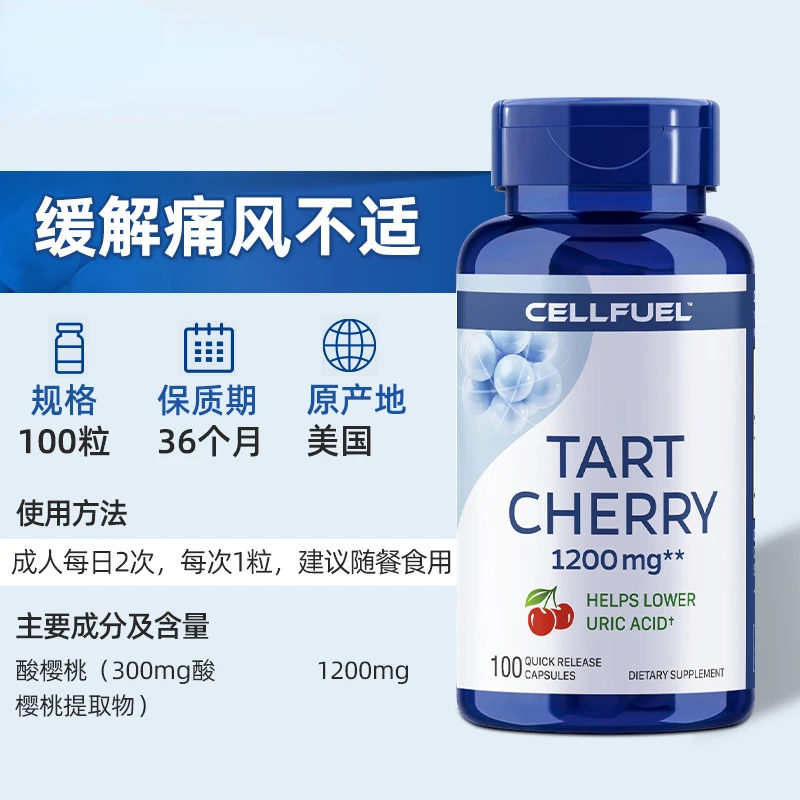
Colchicine
Intravenous colchicine is associated with serious toxicities and side effects, so it should be used as an oral formulation only. High-dose oral colchicine (1.2 mg followed by 0.6 mg every hour for 6 doses) is generally poorly tolerated due to GI side effects. Lower doses are much better received and may be used in combination with NSAIDs.
Corticosteroids
In patients with contraindications to NSAID use, corticosteroids are the next choice. Corticosteroids can be administered as an injection into the affected joint (intra-articular steroids) or given systemically (orally, such as prednisone or medrol). Intra-articular steroids are useful if only one or two joints are affected, and the treating physician is proficient in injecting those joints. Oral corticosteroids can be used starting at 30-40 mg daily, tapering over 10-14 days.
Indications for Uric Acid-Lowering Therapy
Patients who have multiple episodes of acute gout attacks per year or who have tophi on exam are candidates for uric acid-lowering therapy. The use of uric acid-lowering agents will reduce the frequency of gout attacks and, over time, reduce tophi formation and diminish the risk of joint destruction.

The following are indications for uric acid-lowering therapy:
- Tophi or chronic arthritis on exam
- Failure of colchicine prophylaxis of acute gouty arthritis
- Renal stones
- Prior to chemotherapy as prophylaxis of tumor lysis syndrome
- Extremely high levels of serum uric acid (>12 mg/dl)
Causes of Hyperuricemia
Uric acid is the end product of purine (nucleic acid component of DNA) metabolism and is produced normally by the body during tissue remodeling and breakdown. About 20% of uric acid is derived from purines ingested in food. Causes of hyperuricemia can be divided into two major categories: decreased clearance of uric acid from the kidney and increased synthesis of uric acid.
Decreased Renal Clearance
Decreased renal clearance accounts for around 90% of cases of hyperuricemia. Causes include:
- Intrinsic kidney disease
- Heart disease causing decreased blood flow to the kidney
- Drugs (loop diuretics, low-dose aspirin, cyclosporin)
- Genetic predisposition
- Age-related decrease in glomerular filtration rate
Increased Uric Acid Synthesis
Causes of increased uric acid synthesis include:
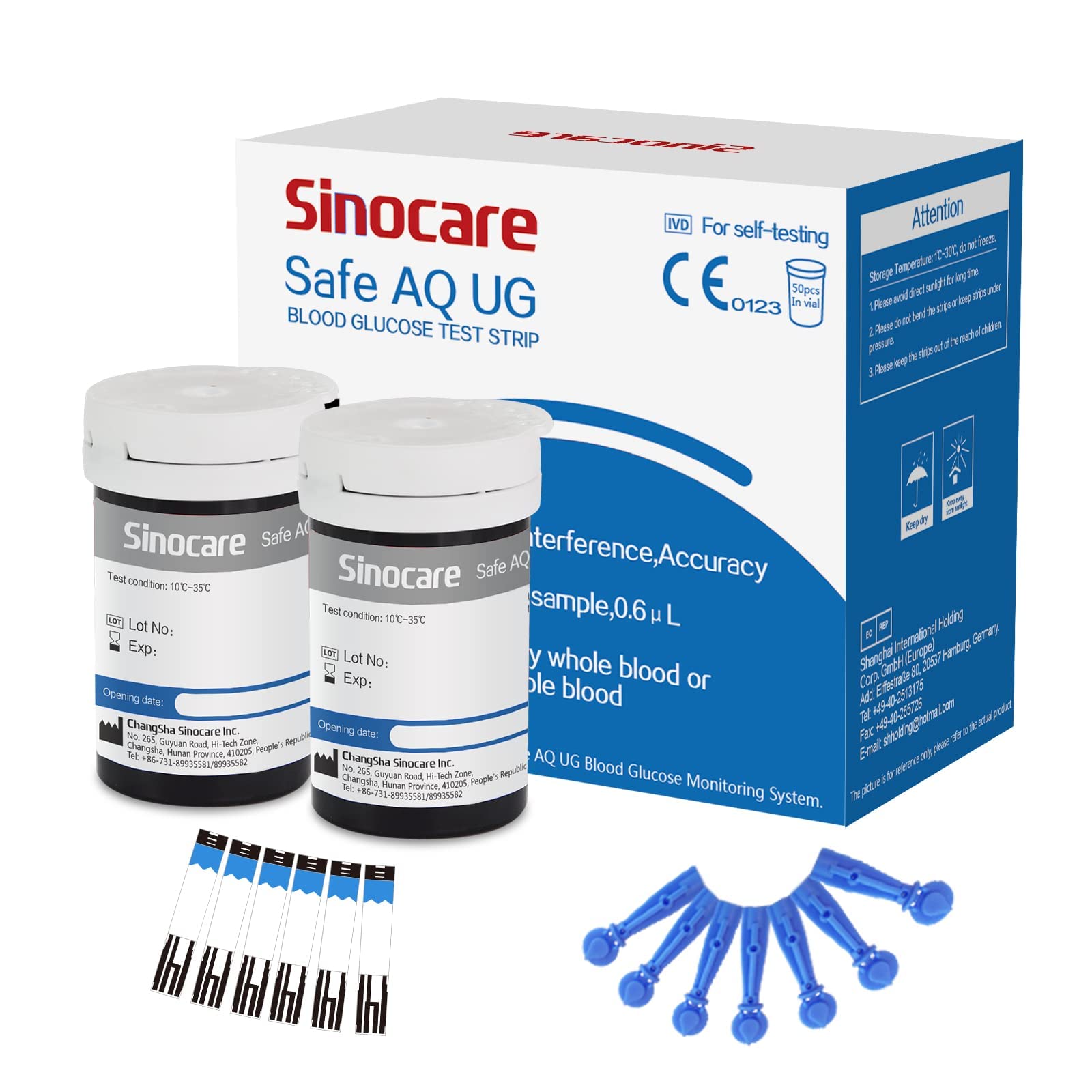
- Dietary indiscretions
- Genetic predisposition
- Increased tissue turnover (tumors, lymphoproliferative disorders)
- Stress-induced increased turnover of ATP
- Alcohol-induced turnover of ATP
Lifestyle Modifications for Lowering Uric Acid
All patients should be encouraged to modify their lifestyle, including limiting alcohol intake, encouraging weight loss where appropriate, and decreasing consumption of foods rich in purines.
Co-morbid medical conditions should also be controlled, including hypertension, diabetes, and hyperlipidemia.
Medication Options for Uric Acid Lowering
When starting a uric acid-lowering treatment, there is a risk of precipitating a gout flare. A plan should be in place for management if this occurs. This generally can be avoided with the co-administration of prophylactic medications (steroids, colchicine, NSAIDs) along with the uric acid-lowering therapy.
Probenecid
Probenecid may be given to patients with decreased clearance of uric acid by the kidney and normal renal function. In general, its use should be limited to patients under the age of 60. Probenecid acts by inhibiting reabsorption of uric acid in the proximal tubules of the kidney. The starting dose is 500 mg to 1000 mg daily, and it can be increased to 1500 mg to 2000 mg as needed. Occasionally, higher doses are needed. Probenecid may precipitate renal stone formation, and good oral hydration should be encouraged. Probenecid is contraindicated in patients with renal stones.
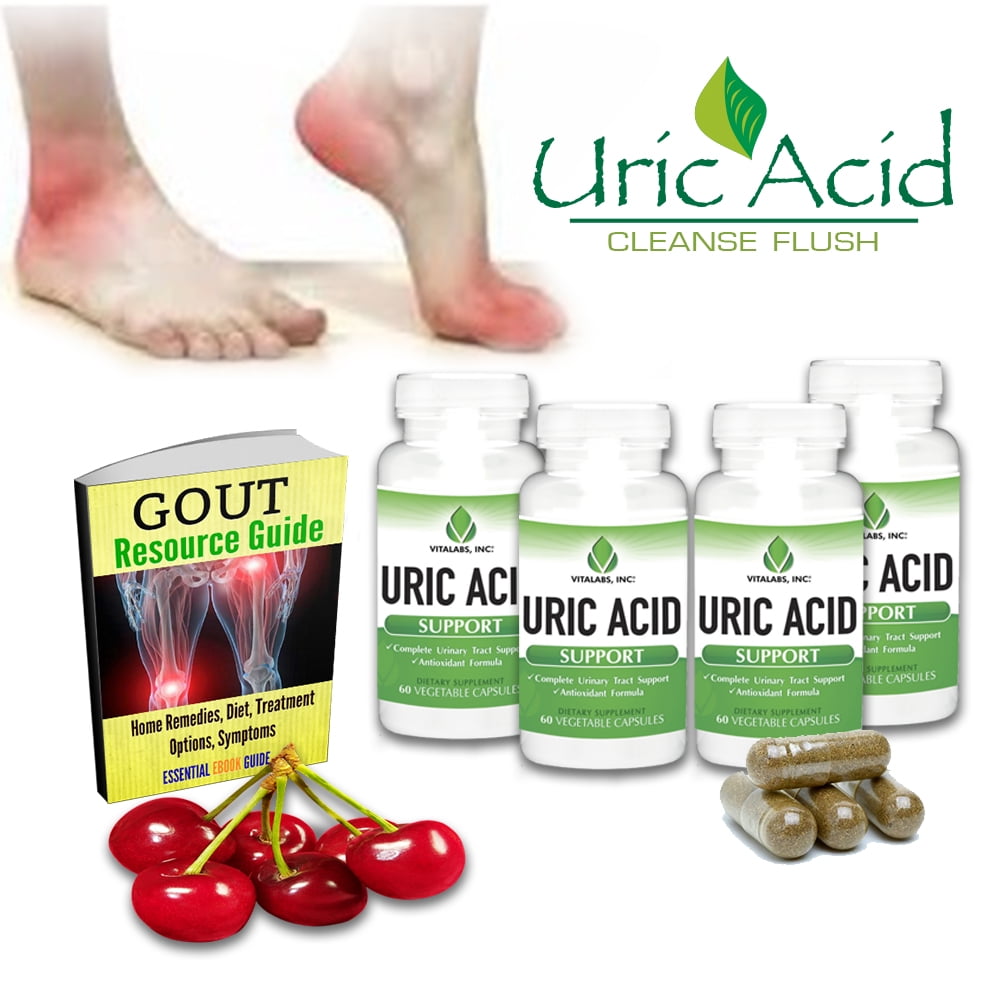
Medications and Lifestyle Adjustments to Lower Uric Acid
Acute Gout Attack
The goal of treatment during an acute gout attack is suppression of inflammation and control of pain. It is important to note, that if a patient is not on uric acid lowering therapy at the time of an acute attack – then this is not the time to initiate such therapy. However, if a patient is on uric acid lowering therapy at the time of an acute attack, it should not be discontinued.
Treatment of pain and inflammation can be achieved with NSAIDs, colchicine, or corticosteroids (systemic or intra-articular). The choice of which treatment is the right one for a particular patient should be made on the basis of the patient’s co-morbid medical conditions, other medications, and side effect profile.
- NSAIDS: Commonly used NSAIDs during an acute gout attack include ibuprofen 800 mg three to four times daily or indomethacin 25 to 50 mg four times daily. Treatment should be discontinued when symptoms resolve.

- Colchicine: Intravenous colchicine is associated with serious toxicities and side effects, so it should be used as an oral formulation only. High dose oral colchicine (1.2 mg followed by 0.6 mg every hour for 6 doses) is generally poorly tolerated because of GI side effects. Lower doses are much better received and may be used in combination with NSAIDs.
- Corticosteroids: In patients with contraindications to NSAID use, corticosteroids are the next choice. Corticosteroids can be administered as an injection into the effected joint (intra-articular steroids) or given systemically (orally, such as prednisone or medrol). Intra-articular steriods are useful if only one or two joints are affected and the treating physician is proficient in injecting those joints. Oral corticosteroids can be used starting at 30-40 mg daily tapering over 10-14 days.
Treatment: Uric Acid Lowering Therapy
Indications
Patients who have multiple episodes of acute gout attacks per year or who have tophi on exam are candidates for uric acid lowering therapy. Use of uric acid lowering agents will reduce the frequency of gout attacks and over time, reduce tophi formation, and diminish the risk of joint destruction. The following are indications for uric acid lowering therapy:
Use of uric acid lowering agents will reduce the frequency of gout attacks and over time, reduce tophi formation, and diminish the risk of joint destruction. The following are indications for uric acid lowering therapy:
- tophi or chronic arthritis on exam
- failure of colchicine prophylaxis of acute gouty arthritis
- renal stones
- Prior to chemotherapy as prophylaxis of tumor lysis syndrome
- Extremely high levels of serum uric acid (>12 mg/dl)
Uric acid is the end product of purine (nucleic acid component of DNA) metabolism and is produced normally by the body during tissue remodeling and breakdown. About 20% of uric acid is derived from purines ingested in food. Causes of hyperuricemia can be divided into two major categories: decreased clearance of uric acid from the kidney and increased synthesis of uric acid.
Decreased renal clearance – (90% of patients)
- Intrinsic kidney disease
- heart disease causing decreased blood flow to the kidney
- drugs (loop diuretics, low dose aspirin, cyclosporin)
- genetic predisposition
- age related decrease in glomerulofiltration rate
Increased uric acid synthesis
- Dietary indiscretions
- Genetic predisposition
- Increased tissue turnover–tumors, lymphoproliferative disorders
- Stress induced increased turnover of ATP
- Alcohol induced turnover of ATP
All patients should be encouraged to modify their lifestyle including limiting alcohol intake, encouraging weight loss where appropriate and decreasing food rich in purines. Co-morbid medical conditions should also be controlled including hypertension, diabetes and hyperlipidemia.
Co-morbid medical conditions should also be controlled including hypertension, diabetes and hyperlipidemia.
Foods High in Purines
- Very High – Hearts, herring , mussels, yeast , smelt, sardines, sweetbreads
- Moderately High – Anchovies, grouse,mutton, veal, bacon, liver salmon, turkey, kidneys, partridge, trout, goose, haddock, pheasant, scallops
Medication Options for Uric Acid Lowering
It is important to note that whenever starting a uric acid lowering treatment, there is a risk of precipitating a gout flare. A plan should be in place for management if this occurs. This generally can be avoided with the co-administration of prophylactic medications (steroids, colchicine, NSAIDs) along with the uric acid lowering therapy.
Probenecid
Probenecid may be given to patients with decreased clearance of uric acid by the kidney and normal renal function.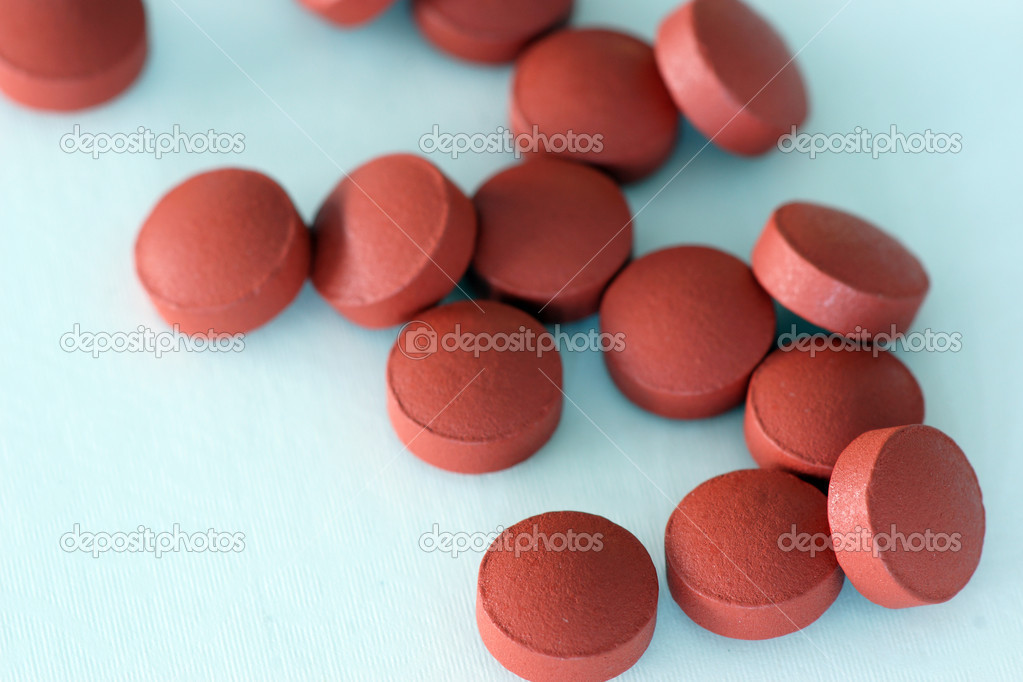 In general its use should be limited to patients under the age of 60. Probenecid acts by inhibiting reabsorption of uric acid in the proximal tubules of the kidney. Starting dose is at 500 mg to 1000 mg daily and increased to 1500 mg to 2000 mg as needed. Occasionally higher doses are needed. Probenecid may precipitate renal stone formation and good oral hydration should be encouraged. Probenecid is contraindicated in patients with renal stones (including calcium and uric acid stones) and in patients with urate nephropathy. Probenecid given inappropriately to patients with hyperuricemia due to overproduction of uric acid can cause renal stones and urate nephropathy.
In general its use should be limited to patients under the age of 60. Probenecid acts by inhibiting reabsorption of uric acid in the proximal tubules of the kidney. Starting dose is at 500 mg to 1000 mg daily and increased to 1500 mg to 2000 mg as needed. Occasionally higher doses are needed. Probenecid may precipitate renal stone formation and good oral hydration should be encouraged. Probenecid is contraindicated in patients with renal stones (including calcium and uric acid stones) and in patients with urate nephropathy. Probenecid given inappropriately to patients with hyperuricemia due to overproduction of uric acid can cause renal stones and urate nephropathy.
- uricosuric
- decreases uric acid reabsorption at the proximal renal tubules
- useful in patients with decreased renal clearance of uric acid
- can only be used if creatinine clearance >40 cc/min
- must have 24 hour urine for uric acid <800 mg/dl
- can be used in renal failure
- increased risk of renal stones
Allopurinol
Allopurinol is a well tolerated, inexpensive, and commonly used uric acid lowering agent. Allopurinol can be started at doses as low as 100 mg daily (100 mg qod if creatinine clearance < 10 cc/min) and titrated by 100 mg every 10-14 days to achieve a serum uric acid level of 4-5 mg/dl. Liver tests, blood counts, and renal function and should be monitored while on therapy. Toxicites include rash, hepatoxicity, bone marrow suppression and severe hypersensitivity reactions. Medication interactions can occur with allopurinol, warfarin, and theophylline and levels should be monitored. Allopurinol should be avoided in patients on azathiprine, 6-mercaptopurine and cyclophosphamide because of risk for bone marrow toxicity.
Allopurinol can be started at doses as low as 100 mg daily (100 mg qod if creatinine clearance < 10 cc/min) and titrated by 100 mg every 10-14 days to achieve a serum uric acid level of 4-5 mg/dl. Liver tests, blood counts, and renal function and should be monitored while on therapy. Toxicites include rash, hepatoxicity, bone marrow suppression and severe hypersensitivity reactions. Medication interactions can occur with allopurinol, warfarin, and theophylline and levels should be monitored. Allopurinol should be avoided in patients on azathiprine, 6-mercaptopurine and cyclophosphamide because of risk for bone marrow toxicity.
- xanthine oxidase inhibitor
- prevents production of uric acid
- useful in both patients with increased synthesis and decreased clearance of uric acid
- no 24 hour urine needed
- can be used in renal failure
- rarely associated with bone marrow suppression, hepatotoxicity, and hypersensitivity reactions
Febuxostat
In 2009, the FDA approved the use of a new xanthine oxidase inhibitor, febuxostat, for the treatment of hyperuricemia in gout.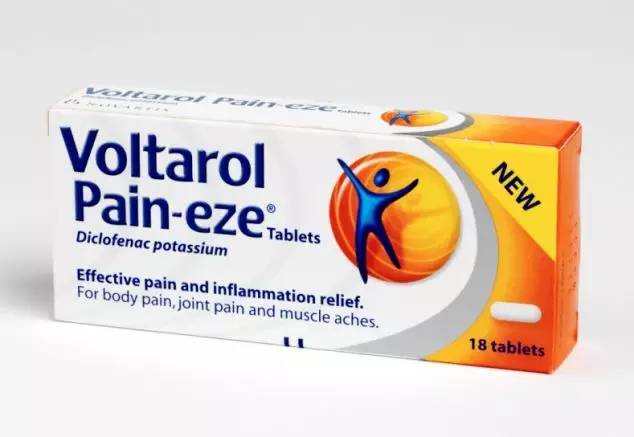 It has demonstrated a dose-dependent decreasee in serum uric acid (daily doses 80mg or 120mg). Its efficacy has been demonstrated in patients with mild or moderate renal impairment and gout. However, it can cause abnormalities in liver function tests and routine monitoring of bloodwork is recommended. Similar to allopurinol, there are interactions of febuxostat with azathioprine, 6MP, and theophylline.
It has demonstrated a dose-dependent decreasee in serum uric acid (daily doses 80mg or 120mg). Its efficacy has been demonstrated in patients with mild or moderate renal impairment and gout. However, it can cause abnormalities in liver function tests and routine monitoring of bloodwork is recommended. Similar to allopurinol, there are interactions of febuxostat with azathioprine, 6MP, and theophylline.
- xanthine oxidase inhibitor
- prevents production of uric acid
- useful in both patients with increased synthesis and decreased clearance of uric acid
- can be used in mild-moderate renal impairment
- rarely associated with bone marrow suppression and hepatotoxicity
Pegloticase
Uricase is an enzyme that converts poorly soluable urate (uric acid) to the more soluable allantoin (excreted in the urine). Uricase is present in most mammals, and these mammals with uricase do not develop gout. However, humans and some primates lack uricase (because of evoluationary gene inactivation) and lack the ability to make uric acid more soluable and hence, have gout.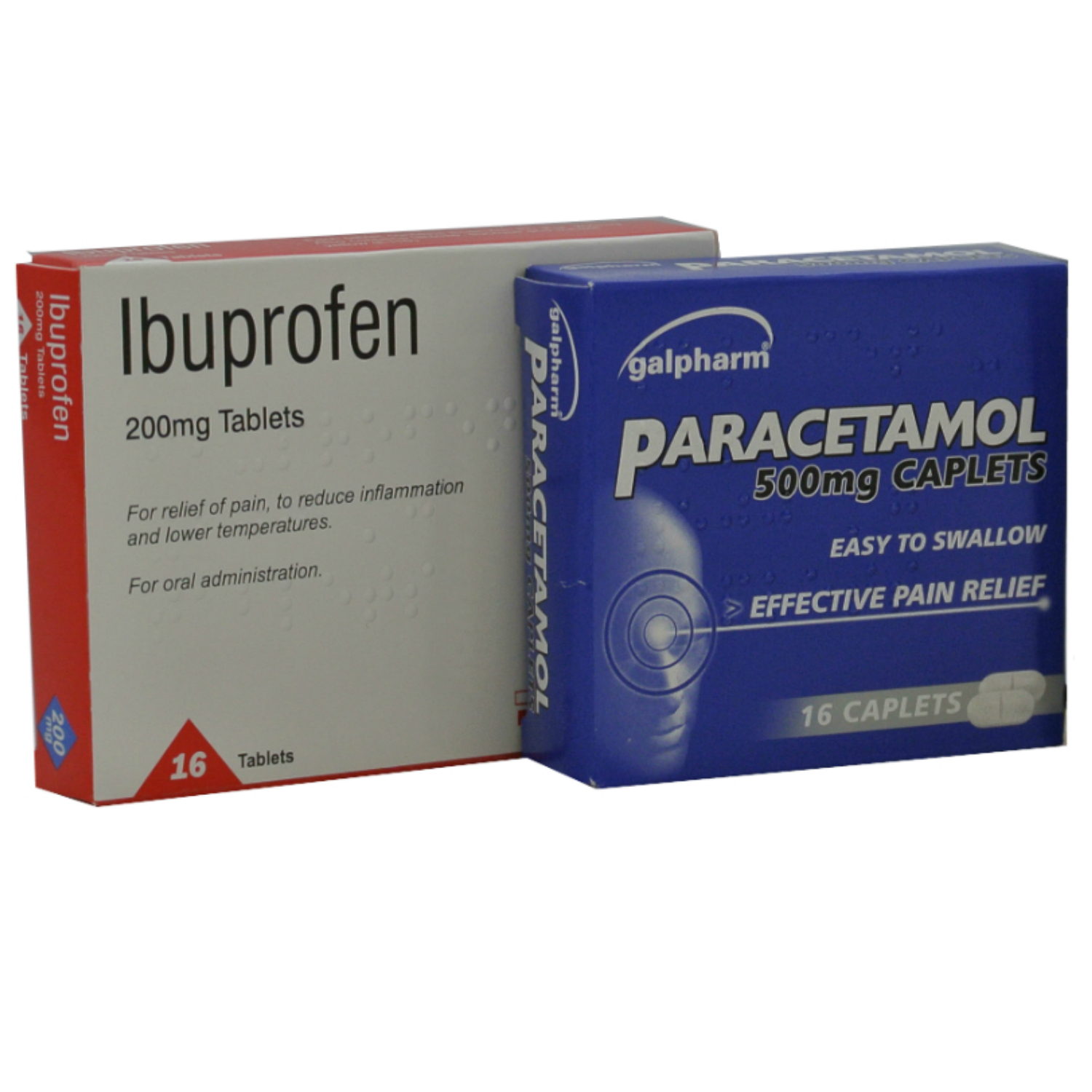 Pegloticase is a porcine uricase which was approved by the FDA in September 2010 for the treatment of gout in patients who have failed conventional therapy.
Pegloticase is a porcine uricase which was approved by the FDA in September 2010 for the treatment of gout in patients who have failed conventional therapy.
Pegloticase is administered by intravenous infusion every 2 weeks. Patients should be treated prophylactically for allergic reations to the infusion with steroids and anti-histamines and monitored closely for the development of an infusion reaction. Caution should be used in prescribing this treatment in patients with a known cardiac history.
- pegylated porcine uricase
- useful in both patients with increased synthesis and decreased clearance of uric acid
- increases solubility of uric acid
- patients should be pre-medicated prior to infusions and monitored for allergic reactions
- caution should be used in patients with known cardiac history
Treatment: Lifestyle
Nutrition / Body Composition
Avoidance of purine rich foods and alcohol may help lower uric acid levels and prevent significant fluctuations in serum uric acid that may precipitate acute attacks. Obesity and increased fat distribution are risk factors for gout.
Obesity and increased fat distribution are risk factors for gout.
Eating a healthy balanced diet of low-fat proteins, low-fat dairy and vegetables will help maintain a healthy weight which is beneficial for the prevention of gout attacks as well.
Managing a Gout Flare | Arthritis Foundation
Few things in life are more painful than a gout flare, so if you’re awakened in the wee hours by a joint that is tender, swollen, red and radiating heat, you’ll want to act fast. Here’s what you can do when a gout flare starts to ease the pain and reduce the risk of others.
Take Medicine You Have on Hand. Start treatment immediately with over-the-counter ibuprofen (Motrin, Advil) or naproxen (Aleve), but never take aspirin, which can worsen a flare. If you have had a flare before and your doctor has prescribed an anti-inflammatory medication to take in the event of another, take your prescribed medication as your doctor directed. If you are already taking a uric acid-lowering drug to reduce the risk of flares, continue to take that drug.
If you are already taking a uric acid-lowering drug to reduce the risk of flares, continue to take that drug.
Ice Down. Applying an ice pack to the painful joint may help ease pain and inflammation. Wrap a pack (a bag of crushed ice or frozen peas will also do) in a dish cloth and apply to the area for 20- to 30-minutes at a stretch several times a day.
Call Your Doctor. Let your doctor know what is going on right away. She may prescribe a new medication, or have you come to the office for a joint fluid test (to confirm the gout diagnosis) or an injection of a corticosteroid to start relieving inflammation quickly. Getting treatment within the first 24 hours of the start of a flare can lessen its length and severity.
Drink Lots of Nonalcoholic Fluids. Staying hydrated helps flush out uric acid (the cause of your joint pain) and prevent kidney stones, another possible problem associated with high uric acid levels. Aim for eight to 16 cups of fluids a day, at least half of them water.
Avoid Alcohol. Although it may be tempting to have a drink to relax when you’re in pain, it’s important to avoid alcohol, especially beer, which contains high levels of purines. The body creates uric acid when it metabolizes purines. Furthermore, alcohol inhibits the excretion of uric acid from your body.
Get a Cane. Walking with a cane during an acute gou flare can help keep pressure off your painful joint.
Elevate Your Foot. If your toe or foot is swollen and painful, raising it with pillows so it’s higher than your chest may help reduce swelling.
Cut Your Sock. Cut the big toe out of cheap socks or cut the toe section off completely if your toes are affected so you can keep your feet warm feet without pressure on your painful toe.
Chill Out. Try to relax if you can; stress can aggravate gout. Watch a movie, talk to a friend, read a book or listen to music to distract yourself.
Revamp Your Menu. Stop eating troublesome high-purine foods, such as shellfish, red meat, sweetbreads and gravies.
Learn Self-Management. Get help setting achievable goals and find support with the free Vim app.
Treat and Reduce Uric Acid
The good news about gout is that it can be controlled. Medicines help in two ways: They reduce pain during an attack, and can reduce the uric acid buildup that causes the condition.
When uric acid builds up in your body, it can form crystals that irritate your joints.
Gout is a type of inflammatory arthritis. An attack may come after an illness or injury. The first sign is often pain in the big toe. It usually affects one joint at a time, but gout can spread to other joints and leave them looking red and swollen.
Get Answers, Advice and Medicine
The pain from a gout attack usually gets better in 3 to 10 days. But you’ll feel better faster if the gout is treated. If you think you might have it, contact your doctor. An exam and tests will show if it’s gout or something else, like an infection.
An exam and tests will show if it’s gout or something else, like an infection.
Talk with your doctor about the best medicines for you. The type will depend on how well your kidneys work, the possible side effects, and other health issues.
Nonprescription Medicines
NSAIDs help reduce pain and swelling in the joints during a gout attack. Popular types are ibuprofen and naproxen. If you take NSAIDs in the first 24 hours, it can help shorten the attack. Other ways to reduce the pain are to ice, rest, and raise the joint.
Prescription Medicines
Your doctor may recommend one of these medicines that you can’t get over the counter:
Preventive Measures
Along with medicine, your doctor may suggest other ways to prevent another attack:
- Exercise and eat a balanced diet to control your weight.
- Drink lots of water.
- Stay away from sugary drinks.
- Avoid excessive alcohol use, especially beer.
- Eat less meat, especially liver and sweetbreads, and seafood.
 Get your protein from foods like low-fat dairy. products like yogurt, cheese and milk.
Get your protein from foods like low-fat dairy. products like yogurt, cheese and milk.
These medicine and lifestyle changes can help you get through an attack and prevent other attacks.
Gout and Ibuprofen – Experiments on Battling Gout
How ibuprofen can relieve your pain during a gout attack
Ibuprofen was first invented and patented as a drug in 1961 by Andrew RM Dunlop and used as a treatment for rheumatoid arthritis first in the UK in 1969 and then in the United States in 1974. It first started as a prescription drug but then after many trials, studies and a good tolerability level in the general population it became a over the counter drug or OTC in pharmacies worldwide as well as your local grocery store.
Ibuprofen is a nonsteroidal anti-inflammatory drug or NSAID and comes in a variety of names we all are familiar with like Advil, Motrin and Nurofen. Compared to other NSAIDs its potential for causing serious side effects like stomach ulcers, heart attacks or strokes is believed to be significantly less, although its effectiveness in relieving inflammation and pain is also believed to be less than that of other NSAIDs.
Ibuprofen is used primarily for fever (including post-immunisation fever), mild-moderate pain (including pain relief after surgery), painful periods and inflammatory diseases such as osteoarthritis, juvenile idiopathic arthritis, dental pain, headache, migraine and rheumatoid arthritis.[1]Also remember that aspirin is an NSAID, but is associated with a higher risk for gout and should be avoided.
Ibuprofen is very effective in treating your pain from a gout attack. It may reduce your gout pain but does nothing to reduce uric acid or reduce the crystals in your joints. It may help increase your mobility rather quickly and by being more mobile, it may also help you heal from your gout attack much quicker.
Any type of arthritis including gout heals better and hurts less with some mild exercise. I personally have used it many times to remove the edge off from my painful toe and ibuprofen should always be available in your medicine cabinet especially if you don’t have colchicine readily available or prescribed NSAIDs since it is over the counter medicine.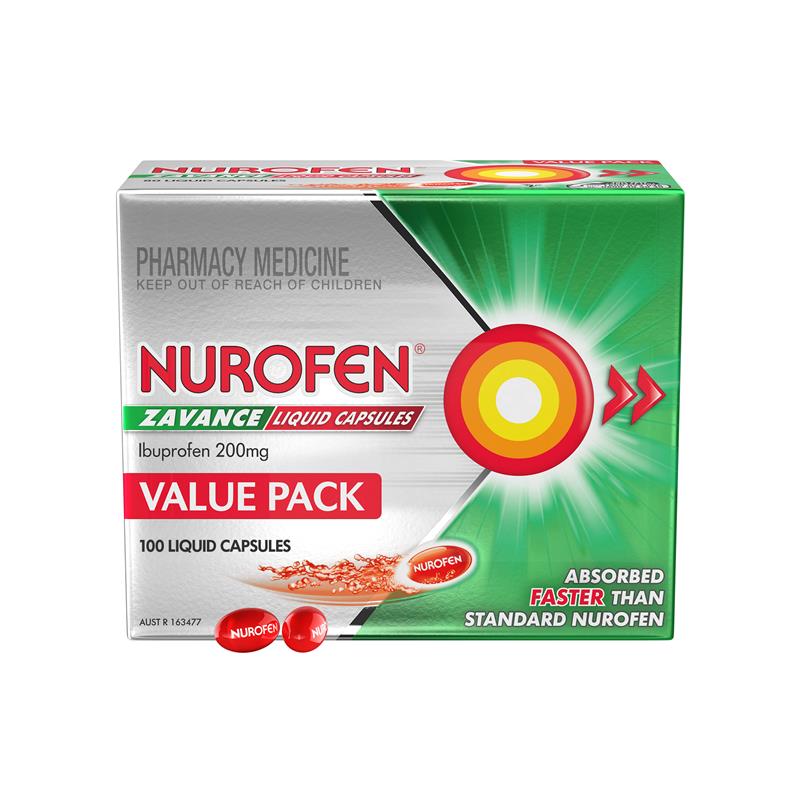 As long as you don’t have renal disease you should be fine in taking ibuprofen but make sure to check with your doctor beforehand.
As long as you don’t have renal disease you should be fine in taking ibuprofen but make sure to check with your doctor beforehand.
How to take ibuprofen
You can take ibuprofen either orally through tablets or liquid and now there’s also a gel or cream that you can use to rub into the affected joint for some relief. If you take tablets make sure to not take it more than 4 times in a day and usually a tablet consists of 200 to 400 mg for a maximum daily dose of 1200 mg. Only take a higher dose with your doctor’s permission. Never exceed the prescribed dosage and wait at least 4 hours in between tablets.
If you experience side effects it is best for you to consult with your doctor and most side effects relate to stomach problems. Make sure to first eat something before taking ibuprofen and if you take it topically like in the cream or gel, there’s less chance of stomach upset.
Credits
[1] Joint Formulary Committee (2013). British National Formulary (BNF) (65 ed. ). London, UK: Pharmaceutical Press. pp. 665, 671
). London, UK: Pharmaceutical Press. pp. 665, 671
Posted by Spiro Koulouris
When should NSAIDS be used in the treatment of gout?
Tang SCW. Gout: A Disease of Kings. Contrib Nephrol. 2018. 192:77-81. [Medline].
Fenando A, Widrich J. Gout. Rheumatol Rehabil. 2020 Jan. 17(4):205-17. [Medline]. [Full Text].
Zamora EA, Naik R. Calcium Pyrophosphate Deposition Disease. J Clin Invest. 2020 Jan. 116(8):2073-5. [Medline]. [Full Text].
Duskin-Bitan H, Cohen E, Goldberg E, Shochat T, Levi A, Garty M, et al. The degree of asymptomatic hyperuricemia and the risk of gout. A retrospective analysis of a large cohort. Clin Rheumatol. 2014 Apr. 33(4):549-53. [Medline].
Edwards NL. Treatment-failure gout: a moving target. Arthritis Rheum. 2008 Sep. 58(9):2587-90. [Medline].
Treatment-failure gout: a moving target. Arthritis Rheum. 2008 Sep. 58(9):2587-90. [Medline].
Bluestone R, Waisman J, Klinenberg JR. The gouty kidney. Semin Arthritis Rheum. 1977 Nov. 7(2):97-113. [Medline].
Towiwat P, Chhana A, Dalbeth N. The anatomical pathology of gout: a systematic literature review. BMC Musculoskelet Disord. 2019 Apr 1. 20 (1):140. [Medline]. [Full Text].
Ben Salem C, Slim R, Fathallah N, Hmouda H. Drug-induced hyperuricaemia and gout. Rheumatology (Oxford). 2016 Aug 7. [Medline].
Reginato AM, Mount DB, Yang I, Choi HK. The genetics of hyperuricaemia and gout. Nat Rev Rheumatol. 2012 Oct. 8(10):610-21. [Medline]. [Full Text].
Krishnan E, Lessov-Schlaggar CN, Krasnow RE, Swan GE. Nature versus nurture in gout: a twin study. Am J Med. 2012 May. 125(5):499-504. [Medline].
Nature versus nurture in gout: a twin study. Am J Med. 2012 May. 125(5):499-504. [Medline].
Liu-Bryan R, Scott P, Sydlaske A, et al. Innate immunity conferred by Toll-like receptors 2 and 4 and myeloid differentiation factor 88 expression is pivotal to monosodium urate monohydrate crystal-induced inflammation. Arthritis Rheum. 2005 Sep. 52(9):2936-46. [Medline].
Nagase M, Baker DG, Schumacher HR Jr. Immunoglobulin G coating on crystals and ceramics enhances polymorphonuclear cell superoxide production: correlation with immunoglobulin G adsorbed. J Rheumatol. 1989 Jul. 16(7):971-6. [Medline].
Ortiz-Bravo E, Sieck MS, Schumacher HR Jr. Changes in the proteins coating monosodium urate crystals during active and subsiding inflammation. Immunogold studies of synovial fluid from patients with gout and of fluid obtained using the rat subcutaneous air pouch model. Arthritis Rheum. 1993 Sep. 36(9):1274-85. [Medline].
Arthritis Rheum. 1993 Sep. 36(9):1274-85. [Medline].
Wu M, Tian Y, Wang Q, Guo C. Gout: a disease involved with complicated immunoinflammatory responses: a narrative review. Clin Rheumatol. 2020 Oct. 39 (10):2849-2859. [Medline].
Martinon F. Mechanisms of uric acid crystal-mediated autoinflammation. Immunol Rev. 2010 Jan. 233(1):218-32. [Medline].
Chatfield SM, Grebe K, Whitehead LW, Rogers KL, Nebl T, Murphy JM, et al. Monosodium Urate Crystals Generate Nuclease-Resistant Neutrophil Extracellular Traps via a Distinct Molecular Pathway. J Immunol. 2018 Mar 1. 200 (5):1802-1816. [Medline].
Terkeltaub RA. What stops a gouty attack?. J Rheumatol. 1992 Jan. 19(1):8-10. [Medline].
Lioté F, Ea HK. Recent developments in crystal-induced inflammation pathogenesis and management. Curr Rheumatol Rep. 2007 Jun. 9(3):243-50. [Medline].
Dalbeth N, Merriman TR, Stamp LK. Gout. Lancet. 2016 Oct 22. 388 (10055):2039-2052. [Medline].
Merola JF, Wu S, Han J, Choi HK, Qureshi AA. Psoriasis, psoriatic arthritis and risk of gout in US men and women. Ann Rheum Dis. 2014 Mar 20. [Medline].
Choi HK, Atkinson K, Karlson EW, et al. Alcohol intake and risk of incident gout in men: a prospective study. Lancet. 2004 Apr 17. 363(9417):1277-81. [Medline].
Lancet. 2004 Apr 17. 363(9417):1277-81. [Medline].
Choi HK, Curhan G. Gout: epidemiology and lifestyle choices. Curr Opin Rheumatol. 2005 May. 17(3):341-5. [Medline].
Singh JA, Reddy SG, Kundukulam J. Risk factors for gout and prevention: a systematic review of the literature. Curr Opin Rheumatol. 2011 Mar. 23(2):192-202. [Medline].
McAdams-Demarco MA, Maynard JW, Coresh J, Baer AN. Anemia and the onset of gout in a population-based cohort of adults: Atherosclerosis Risk in Communities study. Arthritis Res Ther. 2012 Aug 20. 14(4):R193. [Medline]. [Full Text].
Choi HK, Willett W, Curhan G. Fructose-rich beverages and risk of gout in women. JAMA. 2010 Nov 24. 304(20):2270-8. [Medline].
Yang Q, Guo CY, Cupples LA, Levy D, Wilson PW, Fox CS. Genome-wide search for genes affecting serum uric acid levels: the Framingham Heart Study. Metabolism. 2005 Nov. 54(11):1435-41. [Medline].
Dehghan A, Köttgen A, Yang Q, Hwang SJ, Kao WL, Rivadeneira F, et al. Association of three genetic loci with uric acid concentration and risk of gout: a genome-wide association study. Lancet. 2008 Dec 6. 372(9654):1953-61. [Medline]. [Full Text].
Wallace C, Newhouse SJ, Braund P, Zhang F, Tobin M, Falchi M, et al. Genome-wide association study identifies genes for biomarkers of cardiovascular disease: serum urate and dyslipidemia. Am J Hum Genet. 2008 Jan. 82(1):139-49. [Medline]. [Full Text].
Am J Hum Genet. 2008 Jan. 82(1):139-49. [Medline]. [Full Text].
Kolz M, Johnson T, Sanna S, Teumer A, Vitart V, Perola M, et al. Meta-analysis of 28,141 individuals identifies common variants within five new loci that influence uric acid concentrations. PLoS Genet. 2009 Jun. 5(6):e1000504. [Medline]. [Full Text].
Merriman TR. Population heterogeneity in the genetic control of serum urate. Semin Nephrol. 2011 Sep. 31(5):420-5. [Medline].
Vitart V, Rudan I, Hayward C, Gray NK, Floyd J, Palmer CN, et al. SLC2A9 is a newly identified urate transporter influencing serum urate concentration, urate excretion and gout. Nat Genet. 2008 Apr. 40(4):437-42. [Medline].
Campion EW, Glynn RJ, DeLabry LO. Asymptomatic hyperuricemia. Risks and consequences in the Normative Aging Study. Am J Med. 1987 Mar. 82(3):421-6. [Medline].
Am J Med. 1987 Mar. 82(3):421-6. [Medline].
Hall AP, Barry PE, Dawber TR, McNamara PM. Epidemiology of gout and hyperuricemia. A long-term population study. Am J Med. 1967 Jan. 42(1):27-37. [Medline].
Rho YH, Zhu Y, Zhang Y, Reginato AM, Choi HK. Risk factors for pseudogout in the general population. Rheumatology (Oxford). 2012 Nov. 51(11):2070-4. [Medline]. [Full Text].
Lin HY, Rocher LL, McQuillan MA, Schmaltz S, Palella TD, Fox IH. Cyclosporine-induced hyperuricemia and gout. N Engl J Med. 1989 Aug 3. 321(5):287-92. [Medline].
Corominas H, Badlissi F, Shmerling RH. Crystal-induced oligoarthritis triggered by pembrolizumab, an immune checkpoint inhibitor. Joint Bone Spine. 2018 Oct. 85 (5):647-648. [Medline].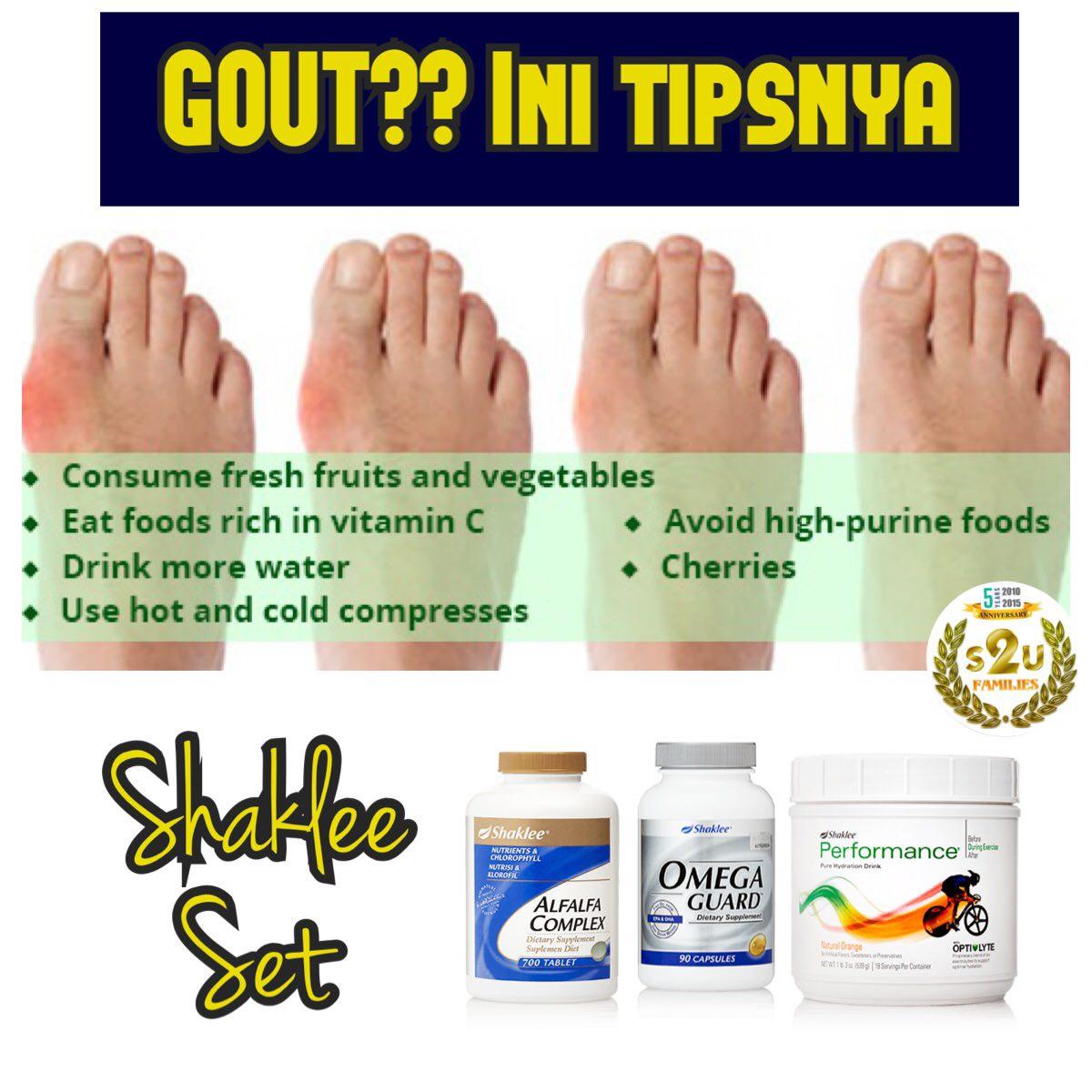
Lai SW, Kuo YH, Liao KF. Risk of gout flares after vaccination. Ann Rheum Dis. 2019 Aug 17. [Medline].
Yokose C, McCormick N, Chen C, Neogi T, Chaisson C, Terkeltaub R, et al. Risk of gout flares after vaccination: a prospective case cross-over study. Ann Rheum Dis. 2019 Nov. 78 (11):1601-1604. [Medline].
Huang YJ, Kuo CF. Can drugs trigger CPPD acute attacks?. Joint Bone Spine. 2019 Mar. 86 (2):131-134. [Medline].
Watanabe H, Yamada S, Anayama S, Sato E, Maekawa S, Sugiyama H, et al. Pseudogout attack induced during etidronate disodium therapy. Mod Rheumatol. 2006. 16(2):117-9. [Medline].
Taggarshe D, Ng CH, Molokwu C, Singh S. Acute pseudogout following contrast angiography. Clin Rheumatol. 2006 Feb. 25(1):115-6. [Medline].
Clin Rheumatol. 2006 Feb. 25(1):115-6. [Medline].
Ciancio G, Bortoluzzi A, Govoni M. Epidemiology of gout and chondrocalcinosis. Reumatismo. 2012 Jan 19. 63(4):207-20. [Medline].
Singh G, Lingala B, Mithal A. Gout and hyperuricaemia in the USA: prevalence and trends. Rheumatology (Oxford). 2019 Dec 1. 58 (12):2177-2180. [Medline]. [Full Text].
Kim KY, Ralph Schumacher H, Hunsche E, Wertheimer AI, Kong SX. A literature review of the epidemiology and treatment of acute gout. Clin Ther. 2003 Jun. 25(6):1593-617. [Medline].
Terkeltaub RA. Gout: Recent advances and emerging therapies. Rheumatic Disease Clinics Update. 2008;3(1):1-9.:
Garg R, Sayles HR, Yu F, Michaud K, Singh J, Saag KG, et al. Gout-related health care utilization in US emergency departments, 2006 through 2008. Arthritis Care Res (Hoboken). 2013 Apr. 65(4):571-7. [Medline].
Gout-related health care utilization in US emergency departments, 2006 through 2008. Arthritis Care Res (Hoboken). 2013 Apr. 65(4):571-7. [Medline].
Singh JA, Gaffo A. Gout epidemiology and comorbidities. Semin Arthritis Rheum. 2020 Jun. 50 (3S):S11-S16. [Medline]. [Full Text].
Tang YM, Zhang L, Zhu SZ, Pan JJ, Zhou SH, He TJ, et al. Gout in China, 1990-2017: the Global Burden of Disease Study 2017. Public Health. 2021 Jan 19. 191:33-38. [Medline].
Cea Soriano L, Rothenbacher D, Choi HK, García Rodríguez LA. Contemporary epidemiology of gout in the UK general population. Arthritis Res Ther. 2011 Mar 3. 13(2):R39. [Medline]. [Full Text].
Trifirò G, Morabito P, Cavagna L, Ferrajolo C, Pecchioli S, Simonetti M, et al. Epidemiology of gout and hyperuricaemia in Italy during the years 2005-2009: a nationwide population-based study. Ann Rheum Dis. 2013 May. 72(5):694-700. [Medline].
Ann Rheum Dis. 2013 May. 72(5):694-700. [Medline].
Reed D, Labarthe D, Stallones R. Epidemiologic studies of serum uric acid levels among Micronesians. Arthritis Rheum. 1972 Jul-Aug. 15(4):381-90. [Medline].
Rose BS. Gout in Maoris. Semin Arthritis Rheum. 1975 Nov. 5(2):121-45. [Medline].
Choi HK, De Vera MA, Krishnan E. Gout and the risk of type 2 diabetes among men with a high cardiovascular risk profile. Rheumatology (Oxford). 2008 Oct. 47(10):1567-70. [Medline].
Olaniyi-Leyimu BY. Consider gout in patients with risk factors, regardless of age. Am Fam Physician. 2008 Jul 15. 78(2):176. [Medline].
Fravel MA, Ernst ME. Management of gout in the older adult.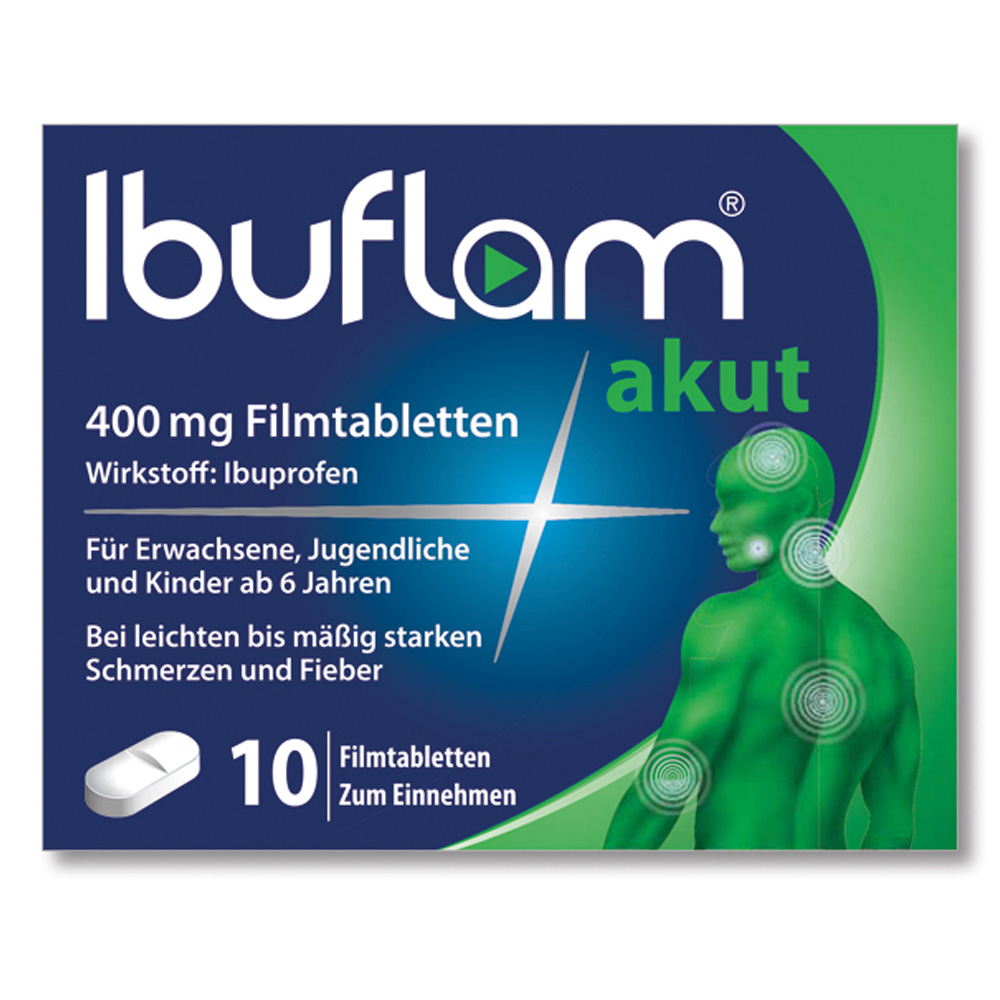 Am J Geriatr Pharmacother. 2011 Oct. 9(5):271-85. [Medline].
Am J Geriatr Pharmacother. 2011 Oct. 9(5):271-85. [Medline].
Singh H, Torralba KD. Therapeutic challenges in the management of gout in the elderly. Geriatrics. 2008 Jul. 63(7):13-8, 20. [Medline].
Simmonds HA, McBride MB, Hatfield PJ, Graham R, McCaskey J, Jackson M. Polynesian women are also at risk for hyperuricaemia and gout because of a genetic defect in renal urate handling. Br J Rheumatol. 1994 Oct. 33(10):932-7. [Medline].
Hochberg MC, Thomas J, Thomas DJ, Mead L, Levine DM, Klag MJ. Racial differences in the incidence of gout. The role of hypertension. Arthritis Rheum. 1995 May. 38(5):628-32. [Medline].
Mody GM, Naidoo PD. Gout in South African blacks. Ann Rheum Dis. 1984 Jun. 43(3):394-7. [Medline]. [Full Text].:max_bytes(150000):strip_icc()/advil-and-aleve-whats-the-difference-2552183-v2-4362db878ee249f79a5da5f7721d409d.png)
Schumacher HR, Taylor W, Joseph-Ridge N, Perez-Ruiz F, Chen LX, Schlesinger N, et al. Outcome evaluations in gout. J Rheumatol. 2007 Jun. 34(6):1381-5. [Medline].
Becker MA, MacDonald PA, Hunt BJ, Lademacher C, Joseph-Ridge N. Determinants of the clinical outcomes of gout during the first year of urate-lowering therapy. Nucleosides Nucleotides Nucleic Acids. 2008 Jun. 27(6):585-91. [Medline].
Yü T, Talbott JH. Changing trends of mortality in gout. Semin Arthritis Rheum. 1980 Aug. 10(1):1-9. [Medline].
Hubert J, Weiser L, Hischke S, Uhlig A, Rolvien T, Schmidt T, et al. Cartilage calcification of the ankle joint is associated with osteoarthritis in the general population. BMC Musculoskelet Disord. 2018 May 24. 19 (1):169.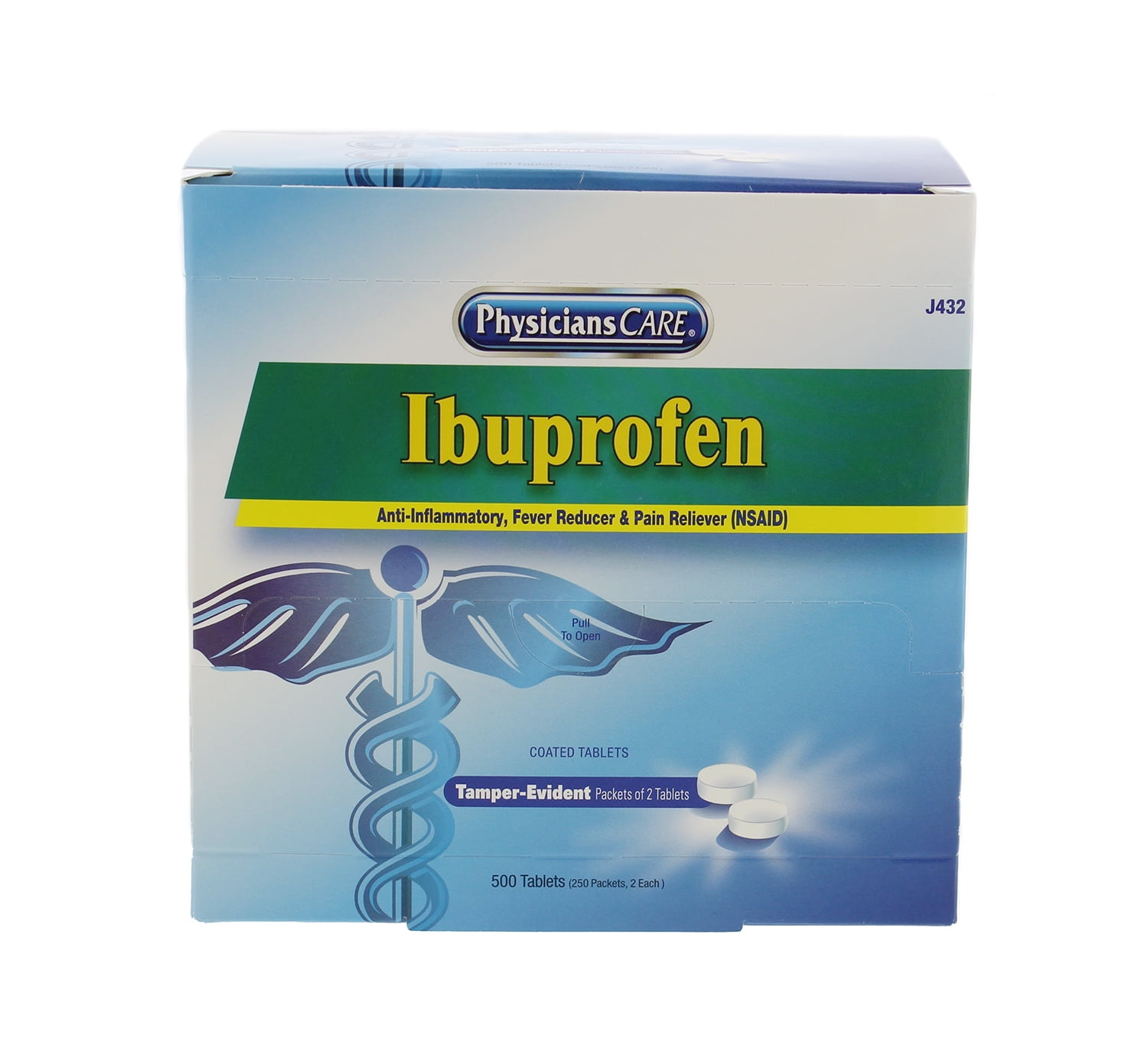 [Medline]. [Full Text].
[Medline]. [Full Text].
Forman JP, Choi H, Curhan GC. Uric acid and insulin sensitivity and risk of incident hypertension. Arch Intern Med. 2009 Jan 26. 169(2):155-62. [Medline]. [Full Text].
Kim SY, De Vera MA, Choi HK. Gout and mortality. Clin Exp Rheumatol. 2008 Sep-Oct. 26(5 Suppl 51):S115-9. [Medline].
Lottmann K, Chen X, Schädlich PK. Association between gout and all-cause as well as cardiovascular mortality: a systematic review. Curr Rheumatol Rep. 2012 Apr. 14(2):195-203. [Medline]. [Full Text].
Feig DI, Johnson RJ. The role of uric acid in pediatric hypertension. J Ren Nutr. Jan/2007. 17(1):79-83. [Medline].
Krishnan E, Svendsen K, Neaton JD, et al. Long-term cardiovascular mortality among middle-aged men with gout.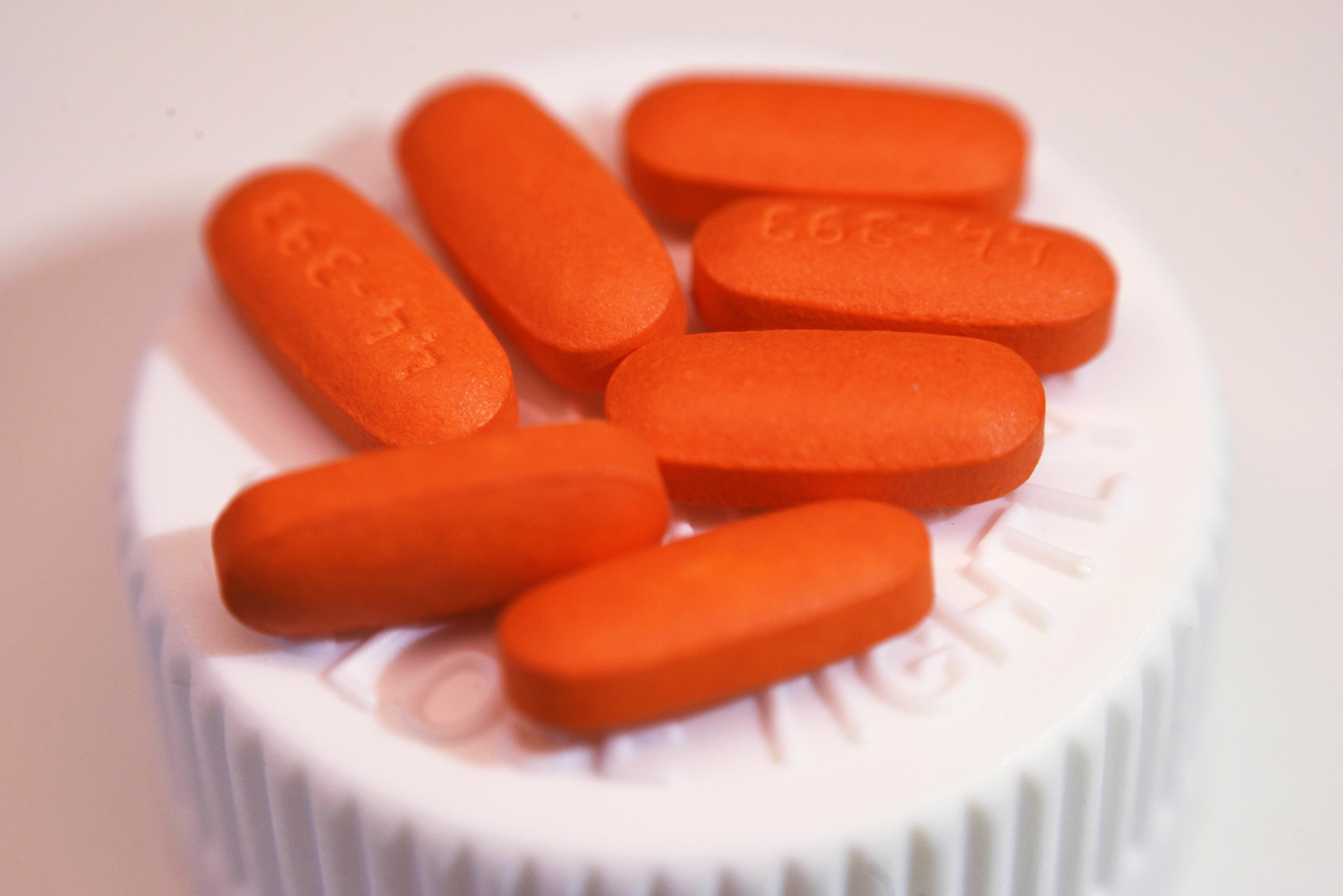 Arch Intern Med. 2008 May 26. 168(10):1104-10. [Medline].
Arch Intern Med. 2008 May 26. 168(10):1104-10. [Medline].
Kuo CF, See LC, Luo SF, Ko YS, Lin YS, Hwang JS, et al. Gout: an independent risk factor for all-cause and cardiovascular mortality. Rheumatology (Oxford). 2010 Jan. 49(1):141-6. [Medline].
Janeczko L. Gout Tied to Higher Risk of Heart Attack and Stroke. Medscape Medical News. Available at http://www.medscape.com/viewarticle/813367. Accessed: November 4, 2013.
Seminog OO, Goldacre MJ. Gout as a risk factor for myocardial infarction and stroke in England: evidence from record linkage studies. Rheumatology (Oxford). 2013 Sep 17. [Medline].
Barclay L. Gout Linked to Increased Vascular Disease Risk. Medscape Medical News. Available at http://www.medscape.com/viewarticle/830663?nlid=64464_2224&src=wnl_edit_medp_rheu&spon=27.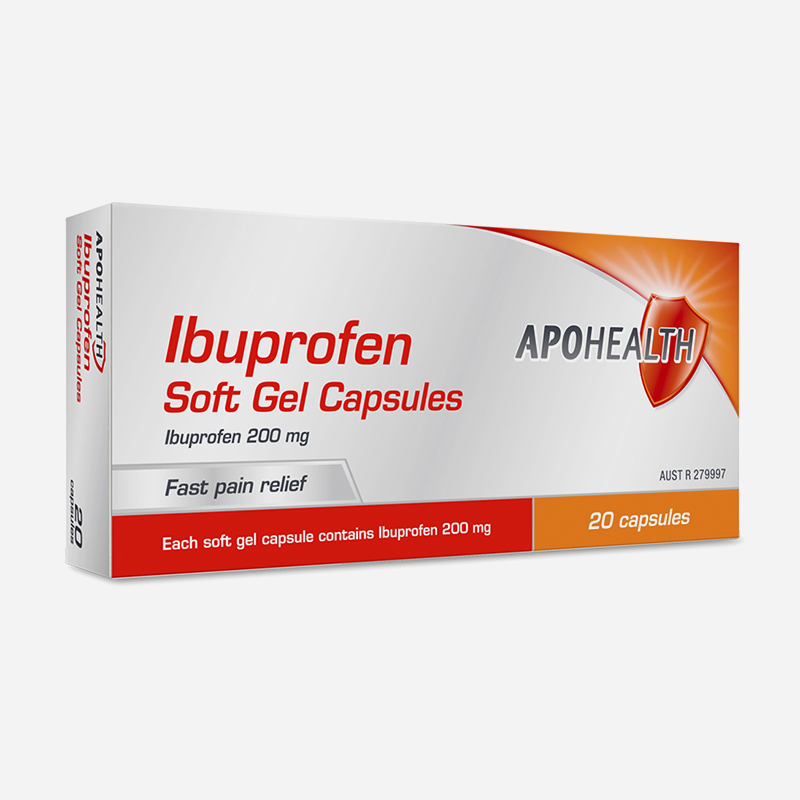 Accessed: September 8, 2014.
Accessed: September 8, 2014.
Clarson LE, Hider SL, Belcher J, Heneghan C, Roddy E, Mallen CD. Increased risk of vascular disease associated with gout: a retrospective, matched cohort study in the UK Clinical Practice Research Datalink. Ann Rheum Dis. 2014 Aug 27. [Medline].
Chen JH, Lan JL, Cheng CF, Liang WM, Lin HY, Tsay GJ, et al. Effect of Urate-lowering Therapy on the Risk of Cardiovascular Disease and All-cause Mortality in Patients with Gout: A Case-matched Cohort Study. J Rheumatol. 2015 Sep. 42 (9):1694-701. [Medline].
Solomon DH, Liu CC, Kuo IH, Zak A, Kim SC. Effects of colchicine on risk of cardiovascular events and mortality among patients with gout: a cohort study using electronic medical records linked with Medicare claims. Ann Rheum Dis. 2016 Sep. 75 (9):1674-9. [Medline]. [Full Text].
[Full Text].
Krasnoryadtseva A, Derksen C, Dalbeth N, Petrie KJ. Not Every Picture Tells a Story: A Content Analysis of Visual Images in Patient Educational Resources About Gout. J Rheumatol. 2020 Dec 1. 47 (12):1815-1821. [Medline].
Lin SH, Hsieh ET, Wu TY, Chang CW. Cervical myelopathy induced by pseudogout in ligamentum flavum and retro-odontoid mass: a case report. Spinal Cord. 2006 Nov. 44(11):692-4. [Medline].
Puig JG, Michan AD, Jimenez ML, et al. Female gout. Clinical spectrum and uric acid metabolism. Arch Intern Med. 1991 Apr. 151(4):726-32. [Medline].
Meyers OL, Monteagudo FS. Gout in females: an analysis of 92 patients. Clin Exp Rheumatol. 1985 Apr-Jun. 3(2):105-9. [Medline].
Kramer HM, Curhan G. The association between gout and nephrolithiasis: the National Health and Nutrition Examination Survey III, 1988-1994. Am J Kidney Dis. 2002 Jul. 40(1):37-42. [Medline].
Marchini GS, Sarkissian C, Tian D, Gebreselassie S, Monga M. Gout, stone composition and urinary stone risk: a matched case comparative study. J Urol. 2013 Apr. 189(4):1334-9. [Medline].
Taniguchi Y, Yoshida M, Tamaki T. Posterior interosseous nerve syndrome due to pseudogout. J Hand Surg Br. 1999 Feb. 24(1):125-7. [Medline].
Dalbeth N, Schauer C, Macdonald P, Perez-Ruiz F, Schumacher HR, Hamburger S, et al. Methods of tophus assessment in clinical trials of chronic gout: a systematic literature review and pictorial reference guide. Ann Rheum Dis. 2011 Apr. 70(4):597-604. [Medline].
Methods of tophus assessment in clinical trials of chronic gout: a systematic literature review and pictorial reference guide. Ann Rheum Dis. 2011 Apr. 70(4):597-604. [Medline].
Stocker SL, Graham GG, McLachlan AJ, Williams KM, Day RO. Pharmacokinetic and pharmacodynamic interaction between allopurinol and probenecid in patients with gout. J Rheumatol. 2011 May. 38(5):904-10. [Medline].
Chehab MR, Goyal J, Schlesinger N. Tophaceous Pustule-like Rash in a Patient with Gout. J Rheumatol. 2012 Jan. 39(1):194-5. [Medline].
Coassin M, Piovanetti O, Stark WJ, Green WR. Urate deposition in the iris and anterior chamber. Ophthalmology. 2006 Mar. 113(3):462-5. [Medline].
Slansky HH, Kubara T. Intranuclear urate crystals in corneal epithelium.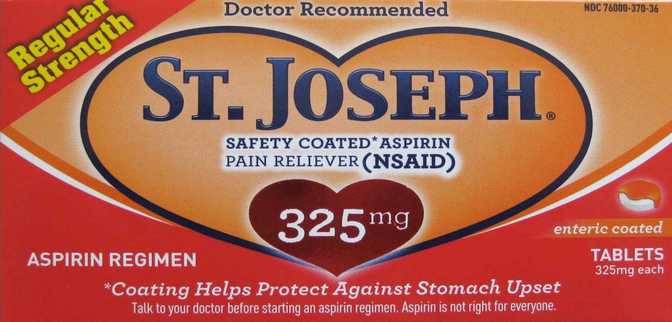 Arch Ophthalmol. 1968 Sep. 80(3):338-44. [Medline].
Arch Ophthalmol. 1968 Sep. 80(3):338-44. [Medline].
Bernad B, Narvaez J, Diaz-Torné C, Diez-Garcia M, Valverde J. Clinical image: corneal tophus deposition in gout. Arthritis Rheum. 2006 Mar. 54(3):1025. [Medline].
MCWILLIAMS JR. Ocular findings in gout; report of a case of conjunctival tophi. Am J Ophthalmol. 1952 Dec. 35(12):1778-83. [Medline].
Morris WR, Fleming JC. Gouty tophus at the lateral canthus. Arch Ophthalmol. 2003 Aug. 121(8):1195-7. [Medline].
Fishman RS, Sunderman FW. Band keratopathy in gout. Arch Ophthalmol. 1966 Mar. 75(3):367-9. [Medline].
Julkunen H, Heinonen OP, Pyörälä K. Hyperostosis of the spine in an adult population. Its relation to hyperglycaemia and obesity. Ann Rheum Dis. 1971 Nov. 30(6):605-12. [Medline]. [Full Text].
Ann Rheum Dis. 1971 Nov. 30(6):605-12. [Medline]. [Full Text].
KOSKOFF YD, MORRIS LE, LUBIC LG. Paraplegia as a complication of gout. J Am Med Assoc. 1953 May 2. 152(1):37-8. [Medline].
Nguyen C, Ea HK, Palazzo E, Lioté F. Tophaceous gout: an unusual cause of multiple fractures. Scand J Rheumatol. 2010. 39(1):93-6. [Medline].
Anno M, Oshima Y, Taniguchi Y, Matsubayashi Y, Kato S, Soma K, et al. Prevalence and Natural Course of Transverse Ligament of the Atlas Calcification in Asymptomatic Healthy Individuals. Spine (Phila Pa 1976). 2018 Dec 15. 43 (24):E1469-E1473. [Medline].
Wold A, Petscavage-Thomas J, Walker EA. Non-union rate of type II and III odontoid fractures in CPPD versus a control population. Skeletal Radiol. 2018 Nov. 47 (11):1499-1504. [Medline].
2018 Nov. 47 (11):1499-1504. [Medline].
Janssens HJ, Fransen J, van de Lisdonk EH, van Riel PL, van Weel C, Janssen M. A diagnostic rule for acute gouty arthritis in primary care without joint fluid analysis. Arch Intern Med. 2010 Jul 12. 170(13):1120-6. [Medline].
Meyer MM, Marks LA, Aslam F. Clinical implications of synovial fluid specimen handling for crystal associated arthritides: A systematic review. Int J Rheum Dis. 2021 Jan. 24 (1):10-20. [Medline].
Barthelemy CR, Nakayama DA, Carrera GF, Lightfoot RW Jr, Wortmann RL. Gouty arthritis: a prospective radiographic evaluation of sixty patients. Skeletal Radiol. 1984. 11(1):1-8. [Medline].
Dalbeth N, Clark B, Gregory K, Gamble G, Sheehan T, Doyle A, et al. Mechanisms of bone erosion in gout: a quantitative analysis using plain radiography and computed tomography.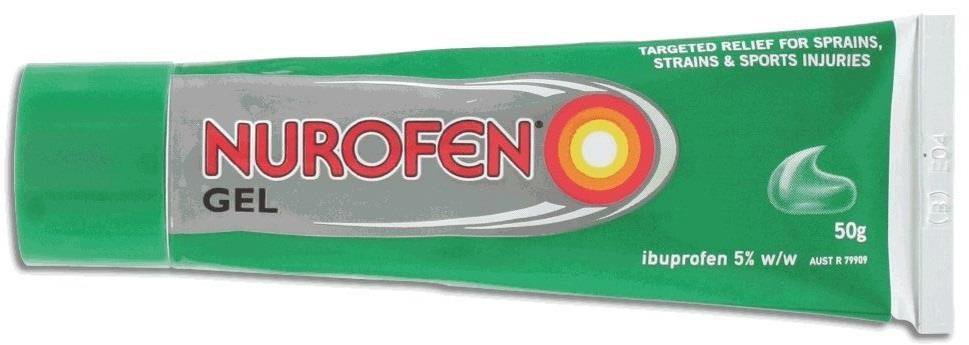 Ann Rheum Dis. 2009 Aug. 68(8):1290-5. [Medline].
Ann Rheum Dis. 2009 Aug. 68(8):1290-5. [Medline].
Fodor D, Albu A, Gherman C. Crystal-associated synovitis- ultrasonographic feature and clinical correlation. Ortop Traumatol Rehabil. 2008 Mar-Apr. 10(2):99-110. [Medline].
de Ávila Fernandes E, Kubota ES, Sandim GB, Mitraud SA, Ferrari AJ, Fernandes AR. Ultrasound features of tophi in chronic tophaceous gout. Skeletal Radiol. 2011 Mar. 40(3):309-15. [Medline].
Fernandes EA, Lopes MG, Mitraud SA, Ferrari AJ, Fernandes AR. Ultrasound characteristics of gouty tophi in the olecranon bursa and evaluation of their reproducibility. Eur J Radiol. 2011 Jan 13. [Medline].
Christiansen SN, Østergaard M, Slot O, Fana V, Terslev L. Ultrasound for the diagnosis of gout-the value of gout lesions as defined by the Outcome Measures in Rheumatology ultrasound group.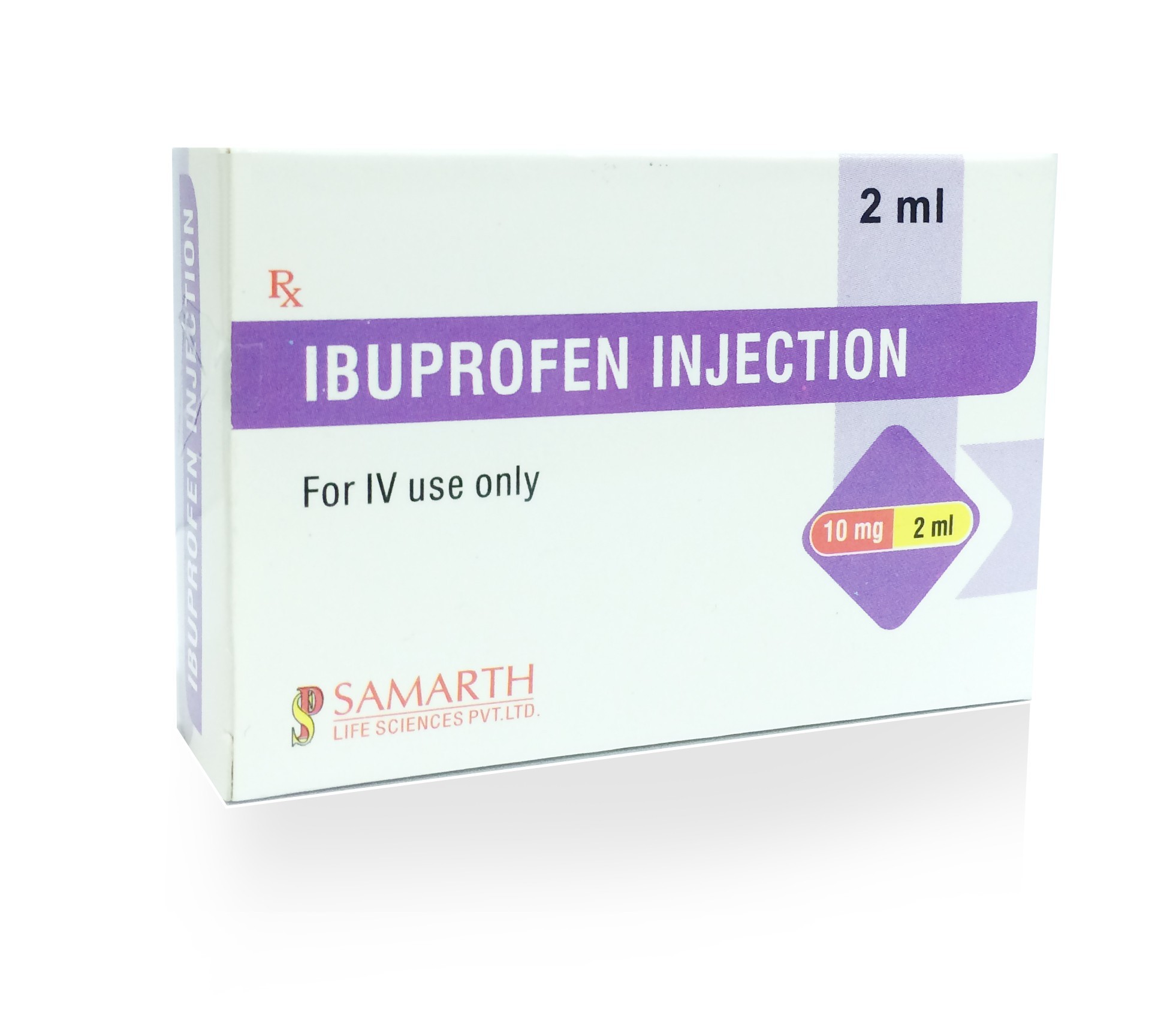 Rheumatology (Oxford). 2021 Jan 5. 60 (1):239-249. [Medline].
Rheumatology (Oxford). 2021 Jan 5. 60 (1):239-249. [Medline].
Loffler C, Sattler H, Peters L, Loffler U, Uppenkamp M, Bergner R. Distinguishing gouty arthritis from calcium pyrophosphate disease and other arthritides. J Rheumatol. 2015 Mar. 42(3):513-20. [Medline].
Naredo E, Uson J, Jiménez-Palop M, Martínez A, Vicente E, Brito E, et al. Ultrasound-detected musculoskeletal urate crystal deposition: which joints and what findings should be assessed for diagnosing gout?. Ann Rheum Dis. 2014 Aug. 73(8):1522-8. [Medline].
Pineda C, Amezcua-Guerra LM, Solano C, Rodriguez-Henríquez P, Hernández-Díaz C, Vargas A, et al. Joint and tendon subclinical involvement suggestive of gouty arthritis in asymptomatic hyperuricemia: an ultrasound controlled study. Arthritis Res Ther. 2011 Jan 17.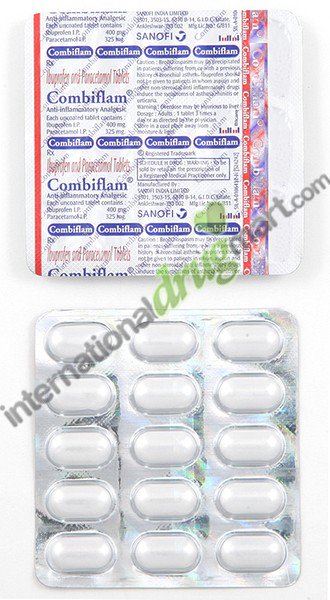 13(1):R4. [Medline]. [Full Text].
13(1):R4. [Medline]. [Full Text].
Ottaviani S, Juge PA, Aubrun A, Palazzo E, Dieudé P. Sensitivity and Reproducibility of Ultrasonography in Calcium Pyrophosphate Crystal Deposition in Knee Cartilage: A Cross-sectional Study. J Rheumatol. 2015 Aug. 42 (8):1511-3. [Medline].
Forien M, Combier A, Gardette A, Palazzo E, Dieudé P, Ottaviani S. Comparison of ultrasonography and radiography of the wrist for diagnosis of calcium pyrophosphate deposition. Joint Bone Spine. 2018 Oct. 85 (5):615-618. [Medline].
De Miguel E, Puig JG, Castillo C, Peiteado D, Torres RJ, Martín-Mola E. Diagnosis of gout in patients with asymptomatic hyperuricaemia: a pilot ultrasound study. Ann Rheum Dis. 2012 Jan. 71(1):157-8. [Medline].
Ventura-Ríos L, Sánchez-Bringas G, Pineda C, Hernández-Díaz C, Reginato A, Alva M, et al. Tendon involvement in patients with gout: an ultrasound study of prevalence. Clin Rheumatol. 2016 Aug. 35 (8):2039-44. [Medline].
Dalbeth N, Clark B, Gregory K, Gamble G, Sheehan T, Doyle A, et al. Mechanisms of bone erosion in gout: a quantitative analysis using plain radiography and computed tomography. Ann Rheum Dis. 2009 Aug. 68(8):1290-5. [Medline].
Al-Arfaj AM, Nicolaou S, Eftekhari A, Munk P, Shojani K, Reid G, et al. Utility of dual energy computed tomography (DECT) i8n tophaceous gout. Ann Rheum Dis. 2008;58:S878.
Ward IM, Scott JN, Mansfield LT, Battafarano DF. Dual-Energy Computed Tomography Demonstrating Destructive Calcium Pyrophosphate Deposition Disease of the Distal Radioulnar Joint Mimicking Tophaceous Gout. J Clin Rheumatol. 2015 Sep. 21 (6):314-7. [Medline].
Shimizu T, Hori H. The prevalence of nephrolithiasis in patients with primary gout: a cross-sectional study using helical computed tomography. J Rheumatol. 2009 Sep. 36(9):1958-62. [Medline].
Stamp LK, Anderson NG, Becce F, Rajeswari M, Polson M, Guyen O, et al. Clinical Utility of Multi-Energy Spectral Photon-Counting Computed Tomography in Crystal Arthritis. Arthritis Rheumatol. 2019 Jul. 71 (7):1158-1162. [Medline].
Poh YJ, Dalbeth N, Doyle A, McQueen FM. Magnetic Resonance Imaging Bone Edema Is Not a Major Feature of Gout Unless There Is Concomitant Osteomyelitis: 10-year Findings from a High-prevalence Population. J Rheumatol. 2011 Nov. 38(11):2475-81. [Medline].
McQueen FM, Doyle A, Reeves Q, Gao A, Tsai A, Gamble GD. Bone erosions in patients with chronic gouty arthropathy are associated with tophi but not bone oedema or synovitis: new insights from a 3 T MRI study. Rheumatology (Oxford). 2014 Jan. 53(1):95-103. [Medline].
Oostveen JC, van de Laar MA. Magnetic resonance imaging in rheumatic disorders of the spine and sacroiliac joints. Semin Arthritis Rheum. 2000 Aug. 30(1):52-69. [Medline].
Abreu M, Johnson K, Chung CB, De Lima JE Jr, Trudell D, Terkeltaub R, et al. Calcification in calcium pyrophosphate dihydrate (CPPD) crystalline deposits in the knee: anatomic, radiographic, MR imaging, and histologic study in cadavers. Skeletal Radiol. 2004 Jul. 33 (7):392-8. [Medline].
Dalbeth N, Reid S, Stamp LK, Arroll B. Making the right thing the easy thing to do: strategies to improve outcomes in gout. Lancet Rheumatology. October 01, 2019. 1:2:PE122-E131. [Full Text].
[Guideline] Khanna D, Fitzgerald JD, Khanna PP, Bae S, Singh MK, Neogi T, et al. 2012 American College of Rheumatology guidelines for management of gout. Part 1: Systematic nonpharmacologic and pharmacologic therapeutic approaches to hyperuricemia. Arthritis Care Res (Hoboken). 2012 Oct. 64(10):1431-46. [Medline]. [Full Text].
[Guideline] Khanna D, Khanna PP, Fitzgerald JD, Singh MK, Bae S, Neogi T, et al. 2012 American College of Rheumatology guidelines for management of gout. Part 2: Therapy and antiinflammatory prophylaxis of acute gouty arthritis. Arthritis Care Res (Hoboken). 2012 Oct. 64(10):1447-61. [Medline]. [Full Text].
[Guideline] FitzGerald JD, Dalbeth N, Mikuls T, et al. 2020 American College of Rheumatology Guideline for the Management of Gout. Arthritis Care Res (Hoboken). 2020 Jun. 72 (6):744-760. [Medline]. [Full Text].
Wilson ME, Wan SH, Beyder A, Osborn TG, Beckman TJ. Acute polyarticular gout presenting as delirium. J Clin Rheumatol. 2013 Jun. 19(4):221-2. [Medline].
Kiltz U, Smolen J, Bardin T, Cohen Solal A, Dalbeth N, Doherty M, et al. Treat-to-target (T2T) recommendations for gout. Ann Rheum Dis. 2016 Sep 22. [Medline].
Kelly JC. Gout: Guidance Issued on Treat-to-Target. Medscape Medical News. Available at http://www.medscape.com/viewarticle/869613. October 3, 2016; Accessed: October 6, 2016.
Dalbeth N, Choi HK, Terkeltaub R. Review: Gout: A Roadmap to Approaches for Improving Global Outcomes. Arthritis Rheumatol. 2017 Jan. 69 (1):22-34. [Medline].
Goodman A. Urate-Lowering Cuts Complications From Gout. Medscape [serial online]. Available at http://www.medscape.com/viewarticle/814057. Accessed: November 18, 2013.
Rashid N, Levy GD, Wu YL, Zheng C, Koblick R, Cheetham TC. Patient and clinical characteristics associated with gout flares in an integrated healthcare system. Rheumatol Int. 2015 Nov. 35 (11):1799-807. [Medline]. [Full Text].
Savient Pharmaceuticals, Inc. Krystexxa Prescribing Information. Available at http://www.krystexxa.com/hcp/default.aspx.
Kelly JC. Gout risk high in those with psoriasis, psoriatic arthritis. Medscape Medical News. March 28, 2014. [Full Text].
Roddy E, Clarkson K, Blagojevic-Bucknall M, Mehta R, Oppong R, Avery A, et al. Open-label randomised pragmatic trial (CONTACT) comparing naproxen and low-dose colchicine for the treatment of gout flares in primary care. Ann Rheum Dis. 2020 Feb. 79 (2):276-284. [Medline]. [Full Text].
Reber P, Crevoisier X, Noesberger B. Unusual localisation of tophaceous gout. A report of four cases and review of the literature. Arch Orthop Trauma Surg. 1996. 115(5):297-9. [Medline].
Schapira D, Stahl S, Izhak OB, Balbir-Gurman A, Nahir AM. Chronic tophaceous gouty arthritis mimicking rheumatoid arthritis. Semin Arthritis Rheum. 1999 Aug. 29(1):56-63. [Medline].
Shogan CP, Folio CL. Tophaceous gout and rheumatoid arthritis awareness. J Am Osteopath Assoc. 2008 Jul. 108(7):352; author reply 352-3. [Medline].
Zhang Y, Neogi T, Chen C, Chaisson C, Hunter DJ, Choi H. Low-dose aspirin use and recurrent gout attacks. Ann Rheum Dis. 2014 Feb 1. 73(2):385-90. [Medline].
Schumacher HR, Berger MF, Li-Yu J, Perez-Ruiz F, Burgos-Vargas R, Li C. Efficacy and tolerability of celecoxib in the treatment of acute gouty arthritis: a randomized controlled trial. J Rheumatol. 2012 Sep. 39(9):1859-66. [Medline].
Medsafe Pharmacovigilance Team. Colchicine: lower doses for greater safety. Available at http://www.medsafe.govt.nz/profs/puarticles/colchdose.htm. Accessed: October 3, 2008.
Nuki G. Colchicine: its mechanism of action and efficacy in crystal-induced inflammation. Curr Rheumatol Rep. 2008 Jul. 10(3):218-27. [Medline].
Zhang W, Doherty M, Bardin T, et al. EULAR evidence based recommendations for gout. Part II: Management. Report of a task force of the EULAR Standing Committee for International Clinical Studies Including Therapeutics (ESCISIT). Ann Rheum Dis. 2006 Oct. 65(10):1312-24. [Medline].
Terkeltaub RA, Furst DE, Bennett K, Kook KA, Crockett RS, Davis MW. High versus low dosing of oral colchicine for early acute gout flare: Twenty-four-hour outcome of the first multicenter, randomized, double-blind, placebo-controlled, parallel-group, dose-comparison colchicine study. Arthritis Rheum. 2010 Apr. 62(4):1060-8. [Medline].
Terkeltaub RA, Furst DE, Digiacinto JL, Kook KA, Davis MW. Novel evidence-based colchicine dose-reduction algorithm to predict and prevent colchicine toxicity in the presence of cytochrome P450 3A4/P-glycoprotein inhibitors. Arthritis Rheum. 2011 Aug. 63(8):2226-37. [Medline].
FDA takes action to stop the marketing of unapproved injectable drugs containing colchicine. US Food and Drug Administration. Available at https://wayback.archive-it.org/7993/20170113075756/http://www.fda.gov/NewsEvents/Newsroom/PressAnnouncements/ucm116853.htm. February 6, 2008; Accessed: March 15, 2018.
Desmarais J, Chu CQ. Utility of Anakinra in Acute Crystalline Diseases: A Retrospective Study Comparing a University Hospital with a Veterans Affairs Medical Center. J Rheumatol. 2019 Jul. 46 (7):748-750. [Medline].
Roddy E. Hyperuricemia, gout, and lifestyle factors. J Rheumatol. 2008 Sep. 35(9):1689-91. [Medline].
FitzGerald JD, Mikuls TR, Neogi T, Singh JA, Robbins M, Khanna PP, et al. Development of the American College of Rheumatology Electronic Clinical Quality Measures for Gout. Arthritis Care Res (Hoboken). 2018 May. 70 (5):659-671. [Medline].
Perez-Ruiz F, Herrero-Beites AM, Carmona L. A two-stage approach to the treatment of hyperuricemia in gout: The “Dirty Dish” hypothesis. Arthritis Rheum. 2011 Dec. 63(12):4002-6. [Medline].
Kelly JC. Gout doubt: Experts challenge new ACP guidelines. Medscape Medical News. Available at http://www.medscape.com/viewarticle/871265. November 2, 2016; Accessed: November 23, 2016.
[Guideline] Qaseem A, Harris RP, Forciea MA, Clinical Guidelines Committee of the American College of Physicians. Management of Acute and Recurrent Gout: A Clinical Practice Guideline From the American College of Physicians. Ann Intern Med. 2016 Nov 1. [Medline]. [Full Text].
Fralick M, Chen SK, Patorno E, Kim SC. Assessing the Risk for Gout With Sodium-Glucose Cotransporter-2 Inhibitors in Patients With Type 2 Diabetes: A Population-Based Cohort Study. Ann Intern Med. 2020 Jan 14. [Medline].
Yu T. The efficacy of colchicine prophylaxis in articular gout–a reappraisal after 20 years. Semin Arthritis Rheum. 1982 Nov. 12(2):256-64. [Medline].
[Guideline] Wallace SL, Singer JZ, Duncan GJ, et al. Renal function predicts colchicine toxicity: guidelines for the prophylactic use of colchicine in gout. J Rheumatol. 1991 Feb. 18(2):264-9. [Medline].
Markel A. Allopurinol-induced DRESS syndrome. Isr Med Assoc J. 2005 Oct. 7(10):656-60. [Medline].
Singer JZ, Wallace SL. The allopurinol hypersensitivity syndrome. Unnecessary morbidity and mortality. Arthritis Rheum. 1986 Jan. 29(1):82-7. [Medline].
McAdams DeMarco MA, Maynard JW, Baer AN, Gelber AC, Young JH, Alonso A, et al. Diuretic use, increased serum urate levels, and risk of incident gout in a population-based study of adults with hypertension: the Atherosclerosis Risk in Communities cohort study. Arthritis Rheum. 2012 Jan. 64(1):121-9. [Medline]. [Full Text].
Yokose C, Lu N, Xie H, Li L, Zheng Y, McCormick N, et al. Heart disease and the risk of allopurinol-associated severe cutaneous adverse reactions: a general population-based cohort study. CMAJ. 2019 Sep 30. 191 (39):E1070-E1077. [Medline]. [Full Text].
Stamp LK, Taylor WJ, Jones PB, Dockerty JL, Drake J, Frampton C, et al. Starting dose is a risk factor for allopurinol hypersensitivity syndrome: a proposed safe starting dose of allopurinol. Arthritis Rheum. 2012 Aug. 64(8):2529-36. [Medline].
Vázquez-Mellado J, Morales EM, Pacheco-Tena C, et al. Relation between adverse events associated with allopurinol and renal function in patients with gout. Ann Rheum Dis. 2001 Oct. 60(10):981-3. [Medline].
Riedel AA, Nelson M, Joseph-Ridge N, Wallace K, MacDonald P, Becker M. Compliance with allopurinol therapy among managed care enrollees with gout: a retrospective analysis of administrative claims. J Rheumatol. 2004 Aug. 31(8):1575-81. [Medline].
Rees F, Jenkins W, Doherty M. Patients with gout adhere to curative treatment if informed appropriately: proof-of-concept observational study. Ann Rheum Dis. 2012 Jun 7. [Medline].
Hair PI, McCormack PL, Keating GM. Febuxostat. Drugs. 2008. 68(13):1865-74. [Medline].
Schumacher HR Jr, Becker MA, Wortmann RL, Macdonald PA, Hunt B, Streit J, et al. Effects of febuxostat versus allopurinol and placebo in reducing serum urate in subjects with hyperuricemia and gout: a 28-week, phase III, randomized, double-blind, parallel-group trial. Arthritis Rheum. 2008 Nov 15. 59(11):1540-8. [Medline].
Schumacher HR Jr, Becker MA, Lloyd E, MacDonald PA, Lademacher C. Febuxostat in the treatment of gout: 5-yr findings of the FOCUS efficacy and safety study. Rheumatology (Oxford). 2009 Feb. 48(2):188-94. [Medline].
Becker MA, Schumacher HR Jr, Wortmann RL, et al. Febuxostat compared with allopurinol in patients with hyperuricemia and gout. N Engl J Med. 2005 Dec 8. 353(23):2450-61. [Medline].
Becker MA, Schumacher HR, Espinoza LR, Wells AF, MacDonald P, Lloyd E, et al. The urate-lowering efficacy and safety of febuxostat in the treatment of the hyperuricemia of gout: the CONFIRMS trial. Arthritis Res Ther. 2010. 12(2):R63. [Medline]. [Full Text].
Jackson RL, Hunt B, MacDonald PA. The efficacy and safety of febuxostat for urate lowering in gout patients 65+ years of age. BMC Geriatr. 2012 Mar 21. 12:11. [Medline]. [Full Text].
Wells AF, MacDonald PA, Chefo S, Jackson RL. African American patients with gout: efficacy and safety of febuxostat vs allopurinol. BMC Musculoskelet Disord. 2012 Feb 9. 13:15. [Medline]. [Full Text].
Chohan S, Becker MA, MacDonald PA, Chefo S, Jackson RL. Women with gout: efficacy and safety of urate-lowering with febuxostat and allopurinol. Arthritis Care Res (Hoboken). 2012 Feb. 64(2):256-61. [Medline].
Yamanaka H, Tamaki S, Ide Y, Kim H, Inoue K, Sugimoto M, et al. Stepwise dose increase of febuxostat is comparable with colchicine prophylaxis for the prevention of gout flares during the initial phase of urate-lowering therapy: results from FORTUNE-1, a prospective, multicentre randomised study. Ann Rheum Dis. 2018 Feb. 77 (2):270-276. [Medline]. [Full Text].
White WB, Saag KG, Becker MA, Borer JS, Gorelick PB, Whelton A, et al. Cardiovascular Safety of Febuxostat or Allopurinol in Patients with Gout. N Engl J Med. 2018 Mar 29. 378 (13):1200-1210. [Medline].
FDA adds Boxed Warning for increased risk of death with gout medicine Uloric (febuxostat). U.S. Food & Drug Administration. Available at https://www.fda.gov/Drugs/DrugSafety/ucm631182.htm. February 21, 2019; Accessed: February 24, 2019.
Zurampic (lesinurad) [package insert]. Wilmington, DE: AstraZeneca Pharmaceuticals. December, 2015. Available at [Full Text].
Perez-Ruiz F, Sundy JS, Miner JN, Cravets M, Storgard C, RDEA594-203 Study Group. Lesinurad in combination with allopurinol: results of a phase 2, randomised, double-blind study in patients with gout with an inadequate response to allopurinol. Ann Rheum Dis. 2016 Jan 7. 7 (6):433-42. [Medline]. [Full Text].
Bieber JD, Terkeltaub RA. Gout: on the brink of novel therapeutic options for an ancient disease. Arthritis Rheum. 2004 Aug. 50(8):2400-14. [Medline].
Committee for Medicinal Products for Human Use (CHMP). Krystexxa (pegloticase). European Medicines Agency. Available at http://www.ema.europa.eu/ema/index.jsp?curl=pages/medicines/human/medicines/002208/human_med_001591.jsp&mid=WC0b01ac058001d124. January 25, 2016; Accessed: January 30, 2016.
Sundy JS, Baraf HS, Yood RA, et al. Efficacy and tolerability of pegloticase for the treatment of chronic gout in patients refractory to conventional treatment: two randomized controlled trials. JAMA. 2011 Aug 17. 306(7):711-20. [Medline].
Huang HY, Appel LJ, Choi MJ, et al. The effects of vitamin C supplementation on serum concentrations of uric acid: results of a randomized controlled trial. Arthritis Rheum. 2005 Jun. 52(6):1843-7. [Medline].
Kobylecki CJ, Afzal S, Nordestgaard BG. Genetically high plasma vitamin C and urate: a Mendelian randomization study in 106 147 individuals from the general population. Rheumatology (Oxford). 2018 Oct 1. 57 (10):1769-1776. [Medline].
So A, De Smedt T, Revaz S, et al. A pilot study of IL-1 inhibition by anakinra in acute gout. Arthritis Res Ther. 2007. 9(2):R28. [Medline].
Lee YH, Lee CH, Lee J. Effect of fenofibrate in combination with urate lowering agents in patients with gout. Korean J Intern Med. 2006 Jun. 21(2):89-93. [Medline].
So A, De Meulemeester M, Pikhlak A, et al. Canakinumab for the treatment of acute flares in difficult-to-treat gouty arthritis: Results of a multicenter, phase II, dose-ranging study. Arthritis Rheum. 2010 Oct. 62(10):3064-76. [Medline].
Lowry F. FDA Panel Says No to Canakinumab for Gout Attacks. Medscape Medical News. Available at http://www.medscape.com/viewarticle/745076. Accessed: February 9, 2011.
Yokose C, McCormick N, Choi HK. The role of diet in hyperuricemia and gout. Curr Opin Rheumatol. 2021 Jan 4. Publish Ahead of Print:[Medline].
Rai SK, Fung TT, Lu N, Keller SF, Curhan GC, Choi HK. The Dietary Approaches to Stop Hypertension (DASH) diet, Western diet, and risk of gout in men: prospective cohort study. BMJ. 2017 May 9. 357:j1794. [Medline]. [Full Text].
[Guideline] Qaseem A, McLean RM, Starkey M, Forciea MA, Clinical Guidelines Committee of the American College of Physicians. Diagnosis of Acute Gout: A Clinical Practice Guideline From the American College of Physicians. Ann Intern Med. 2016 Nov 1. [Medline]. [Full Text].
Cipolletta E, Di Matteo A, Scanu A, Isidori M, Di Battista J, Punzi L, et al. Biologics in the treatment of calcium pyrophosphate deposition disease: a systematic literature review. Clin Exp Rheumatol. 2020 Sep-Oct. 38 (5):1001-1007. [Medline]. [Full Text].
Colchicine Or Naproxen Treatment for ACute gouT – Full Text View
Gout is the most common cause of inflamed joints affecting 1.4% of adults in the UK. Most patients are treated entirely in general practice yet primary care management is frequently suboptimal. Acute attacks of gout are excruciatingly painful and require urgent drug treatment to reduce inflammation, most commonly with antiinflammatory drugs(NSAIDs) or colchicine. In primary care, NSAIDs are most commonly used but can cause serious side effects such as stomach ulcers and heart disease, particularly in the elderly. Patients frequently require repeat prescriptions for recurrent attacks of acute gout increasing the risk of drug-related side-effects. Low-dose colchicine is popular amongst rheumatologists as it is effective and well tolerated. However, general practitioners (GPs) prescribe colchicine infrequently, probably because in the past the recommendation was for high doses to be prescribed which commonly caused severe diarrhoea. Recently, prescribing recommendations for colchicine have changed, advocating a lower dose regime.
Currently there is no evidence regarding whether NSAIDs or low-dose colchicine is the best treatment for acute gout. This trial will be the first direct comparison of the effectiveness and side effects of a NSAID (naproxen) and low-dose colchicine to treat acute gout in primary care. Naproxen will be used in this trial because it has been shown to be as effective as oral prednisolone for the treatment of acute gout, is safer than other commonly used NSAIDs such as diclofenac and indomethacin, and is inexpensive.
Patients consulting their GP with an acute attack of gout in up to 100 general practices will be invited to participate. Treatment success will be assessed by comparing pain reduction between the two drugs. The trial will also monitor side effects, quality of life, and cost effectiveness.
Gout is the most prevalent inflammatory arthritis. It is largely managed in primary care but treatment is often suboptimal. Acute gout causes attacks of excruciating joint pain requiring rapid treatment. In primary care, treatment is most frequently with non-steroidal anti-inflammatory drugs (NSAIDs) which are effective but have frequent gastrointestinal, cardiovascular and renal side-effects, particularly in the elderly. Oral colchicine has been used to treat acute gout for many years although high-doses can cause intolerable gastrointestinal side-effects. Low-dose colchicine is thought to be as effective and better-tolerated and is now recommended by the British National Formulary. However, there has been no direct comparison of NSAID and low-dose colchicine for acute gout.
This pragmatic randomised trial will compare the effectiveness of low-dose colchicine (500 mcg three times every eight hours) and naproxen (750 mg immediately followed by 250 mg every eight hours) for reducing pain in adults aged 18 years and over consulting their GP with acute gout, recruited from up to 100 general practices. People experiencing their first attack of gout or a recurrent attack will be eligible to participate. However, all patients registered with each participating practice who have consulted with gout in the preceding two years will be mailed a letter of invitation and Participant Information Sheet informing them that the trial is taking place and encouraging them to consult their GP if they experience an attack of acute gout. Eligibility assessment, informed consent, randomisation, baseline data collection and prescription will be performed when the patient consults in primary care with acute gout. Outcome measures will be collected via self-complete questionnaires at days 1-7 (daily diary), and 4 weeks. The primary outcome measure will be change in worst pain intensity in the previous 24 hours measured daily over days 0-7. Secondary outcome measures include side-effects, time to treatment response, patient global assessment of response to treatment, adherence to treatment, use of other medications for pain relief, and cost. A sample size of 200 patients per treatment arm provides 90% power to detect a minimum clinically important treatment effect of a small standardised effect size of 0.3 between the treatment groups.
Naproxen better first-line gout option than colchicine in primary care
December 11, 2019
2 min read
ADD TOPIC TO EMAIL ALERTS
Receive an email when new articles are posted on
Please provide your email address to receive an email when new articles are posted on .
Subscribe
We were unable to process your request. Please try again later. If you continue to have this issue please contact [email protected].
Back to Healio
Although there is no significant difference between naproxen and low-dose colchicine in terms of improvements in pain intensity among patients with gout flare, naproxen causes fewer side effects, making it the superior first-line option for gout flares in primary care, according to findings published in Annals of the Rheumatic Diseases.
“Numerous randomized trials demonstrate that NSAIDs treat gout flares effectively,” Edward Roddy, DM, FRCP, of Keele University, in the United Kingdom, and colleagues wrote. “However, side effects are frequent and can be life-threatening. NSAIDs are commonly used in all age groups: Three-quarters of NSAID prescriptions for gout flares in the UK. in 2001-2004 were for diclofenac or indomethacin, two of the most toxic NSAIDs. Naproxen is associated with lower vascular risk than other NSAIDs and is as effective as oral prednisolone for gout flares.”
“High-dose colchicine is effective but commonly causes gastrointestinal side effects,” they added. “Lower doses are as effective but better tolerated. The recommended ‘low-dose’ regimen in the UK is 500 [µg] two to four times per day, however, the effectiveness and tolerability of this dose have never been evaluated. A direct comparison of an NSAID and low-dose colchicine is needed to inform choice for patients and practitioners.”
To analyze the effectiveness and safety of naproxen compared with low-dose colchicine for gout flares in primary care, Roddy and colleagues conducted an open-label randomized trial of 399 adults from 100 general practices throughout England. Participants were randomly assigned to one of two treatment groups, with 200 receiving 750 mg of naproxen immediately followed by 250 mg of the drug every 8 hours for 7 days. The remaining 199 were treated with 500 µg of colchicine three times per day for 4 days.
Although there is no significant difference between naproxen and low-dose colchicine in terms of improvements in pain intensity among patients with gout flare, naproxen causes fewer side effects, according to findings.
Source: Adobe
The primary outcome was the change from baseline in worst pain intensity in the past 24 hours, using the 0 to 10 numeric rating scale, measured daily through the first 7 days. Mean change from baseline was compared between groups. A total of 349 participants completed the primary outcome data at day 7.
According to the researchers, there was no significant difference between the groups in terms of average changes in pain scores throughout the 7-day period. Among participants in the colchicine group, compared with those treated with naproxen, the mean difference was –0.18 (95% CI, –0.53 to 0.17).
However, during the 7-day treatment period, diarrhea was more common among those treated with colchicine compared with the naproxen group, by 45.9% to 20% (OR = 3.31; 2.01-5.44). This was also true of headaches, with 20.5% in the colchicine group and 10.7% among those treated with naproxen (OR = 1.92; 95% CI, 1.03-3.55). Constipation was less common in the colchicine group, at 4.8% compared with 19.3% in the naproxen group (OR = 0.24; 95% CI, 0.11-0.54).
“NSAIDs and colchicine are not the only drugs used to treat gout flares,” Roddy and colleagues wrote. “The American College of Physicians recommends corticosteroids as first-line treatment, whereas other guidelines advise being guided by comorbidities, contraindications, previous response and the pattern of joint involvement. While randomized trials have compared NSAIDs and prednisolone, future research should compare the effectiveness and safety of colchicine and corticosteroids, particularly in patients with contraindications to NSAIDs.”
They added, “We found little difference in pain reduction between naproxen and low-dose colchicine, but naproxen was associated with fewer side effects, less analgesic use and slightly lower costs, suggesting that, in the absence of contraindications, naproxen should be used ahead of low-dose colchicine to treat gout flares in primary care.” – by Jason Laday
Disclosure: The researchers no relevant financial disclosures.
ADD TOPIC TO EMAIL ALERTS
Receive an email when new articles are posted on
Please provide your email address to receive an email when new articles are posted on .
Subscribe
We were unable to process your request. Please try again later. If you continue to have this issue please contact [email protected].
Back to Healio
90,000 How effective is ibuprofen for gout?
Ibuprofen for gout is an effective remedy for pain and inflammation. Gout is a form of arthritis characterized by a buildup of uric acid in the blood. In addition, acute gout usually causes pain and inflammation in only one joint, where chronic gout can cause symptoms in multiple joints. When ibuprofen for gout is used as a treatment option, the swelling, redness, and pain usually decrease.The big toe is the most commonly affected joint, but gout can occur in any joint in the body.
Causes of gout include the production of excess uric acid or the body’s inability to excrete uric acid. In addition, those with kidney disease, diabetes, anemia, and leukemia are also at risk of developing gout. In addition, gout can be hereditary and is most common in men, people who drink alcoholic beverages, and postmenopausal women.Taking diuretics or pills with water can also predispose people to gout, as can obesity.
Take ibuprofen for gout only after consulting your doctor. Other medications may be warranted and more effective in managing symptoms. While taking ibuprofen to treat gout can help reduce symptoms, side effects such as upset stomach and abnormal bleeding can occur. In addition, those taking blood thinning medications should refrain from taking ibuprofen for gout unless deemed safe by a healthcare professional.
Although symptoms of gout may be mild, severe symptoms may occur. These include sudden, throbbing or persistent pain, joint soreness, and even fever. In some cases, gout can permanently damage joints and reduce range of motion. Diagnostic tests used to determine if gout is present include blood tests to assess uric acid levels, urinalysis, x-rays, and analysis of joint fluid.In addition to anti-inflammatory drugs, drugs such as codeine, corticosteroids, and colchicine may be recommended to treat symptoms.
Dietary changes can also help relieve gout symptoms and usually include avoiding alcohol, limiting meat and fatty foods, and cutting back on foods containing a substance called purine. Examples of foods containing purine include sardines, herring, legumes, and spinach. Other foods that contain purine include asparagus, peas, and brewer’s yeast.High levels of dietary purine can worsen pain and swelling, and may not consume enough complex carbohydrates.
Symptoms of gout can be severe enough to interfere with a person’s daily life. In some cases, the pain and swelling on the big toe is so severe that wearing the show becomes nearly impossible without excruciating pain. When this type of persistent pain occurs, the healthcare professional may need further evaluation to determine if there is permanent joint damage.
OTHER LANGUAGES
instructions for use, analogs, composition, indications
The results of clinical trials suggest a possible relationship between taking ibuprofen, especially when taken in high doses (> 2400 mg / day), and a slight increased risk of arterial thrombotic events (eg, myocardial infarction and stroke).
The following adverse reactions are classified by organ, system and frequency of occurrence, with the most common listed first.Classification of the incidence of adverse reactions: very often (≥ 1/10), often (> 1/100 and ≤ 1/10), infrequently (> 1/1000 and ≤ 1/100), rarely (> 1/10000 and ≤ 1 / 1000), very rare (<1/10000, including single messages). For each frequency in the group, adverse reactions are sorted in order of increasing severity.
Blood system and lymphatic system: very rarely – violation of hematopoiesis (agranulocytosis, anemia, aplastic anemia, hemolytic anemia, leukopenia, neutropenia, pancytopenia, thrombocytopenia).
Immune System:
very rarely – hypersensitivity reactions (nonspecific allergic reactions and anaphylaxis).
Mental disorders: very rare – confusion, depression, hallucinations.
Nervous system:
infrequently – headache and dizziness; very rarely – paresthesia, optic neuritis, drowsiness, aseptic meningitis.
Organ of vision: very rarely – visual impairment.
Hearing organ and vestibular apparatus: very rarely – tinnitus and dizziness.
Cardiovascular system: very rarely – edema, hypertension, heart failure.
Respiratory system and chest organs: very rarely – asthma, aggravation of asthma, bronchospasm, dyspnea.
Digestive System:
often – abdominal pain, diarrhea, dyspepsia, nausea, stomach discomfort, vomiting; infrequently – flatulence, constipation, stomach ulcer, perforation or gastrointestinal bleeding with symptoms of melena, bloody vomiting, sometimes fatal, more often in the elderly, ulcerative stomatitis, exacerbation of ulcerative colitis and Crohn’s disease, gastritis, pancreatitis.
Hepatobiliary system:
very rarely – liver dysfunction, hepatitis, jaundice, acute liver failure, liver necrosis, liver damage (with paracetamol overdose).
Skin and subcutaneous fat: infrequently – rash of various types, including itching and urticaria, angioedema and facial edema; very rarely – hyperhidrosis, purpura, photosensitivity, exfoliative dermatitis, erythema multiforme, Stevens-Johnson syndrome, toxic epidermal necrolysis; frequency unknown – acute generalized exanthematous pustulosis.
Kidney and urinary system: very rare – nephrotoxicity in various forms, including interstitial nephritis, nephrotic syndrome, acute and chronic renal failure.
General disorders: very rarely – fatigue and malaise.
Research: often – increased ALT and gamma-glutamyltransferase, impaired liver function tests, increased creatinine and urea; infrequently – an increase in ACT, ALP and CPK, a decrease in hemoglobin, an increase in the number of platelets.
The first signs of hematopoietic disorders: fever, sore throat, superficial mouth ulcers, flu-like symptoms, exhaustion, unexplained bleeding and bruising, nosebleeds.
Hypersensitivity reactions were manifested by edema of the face, tongue and larynx, dyspnea, tachycardia, hypotension, Quincke’s edema, anaphylactic shock.
There have been isolated cases of aseptic meningitis in patients with autoimmune disorders (such as systemic lupus erythematosus and systemic connective tissue diseases) treated with ibuprofen, accompanied by symptoms: neck stiffness, headache, nausea, vomiting, fever or disorientation.
ibuprofen joint ointment names
ibuprofen joint ointment names
ibuprofen ointment for joints names
>>> GO TO OFFICIAL SITE >>>
What is ibuprofen joint ointment name?
The drug Articulat has a number of advantages in comparison with analogues from pharmaceutical tablets: Hypoallergenic composition without capsaicin and other harmful substances.External use does not entail a toxic load on the internal organs. Over the counter and affordable price for home use. Prolonged action, lack of addiction, side reactions and return effect. It is universal for a disease of any etiology as a treatment and prevention for women and men at any age. Relief of inflammation and its pathogens, as well as substances that ensure its progression. Increased local immunity. Improving metabolism and increasing blood flow ensures the replenishment of the supply of nutrients, vitamins, minerals and oxygen.
Effect of using ibuprofen ointment for joints Name
The drug Articulat has a number of advantages in comparison with analogues from pharmaceutical tablets: Hypoallergenic composition without capsaicin and other harmful substances. External use does not entail a toxic load on the internal organs. Over the counter and affordable price for home use. Prolonged action, lack of addiction, side reactions and return effect. It is universal for a disease of any etiology as a treatment and prevention for women and men at any age.Relief of inflammation and its pathogens, as well as substances that ensure its progression. Increased local immunity. Improving metabolism and increasing blood flow ensures the replenishment of the supply of nutrients, vitamins, minerals and oxygen.
Expert opinion
I have been using Articulat Gel for a month already for my knees. I have had arthritis of my knees for many years and with this ointment I walk without pain at all. I use it strictly every day, I smear my knees before going to bed, it is well absorbed, I will order more soon, it is not expensive as for me, but the benefits of it are palpable, I will use it while it helps me, I hope there is no getting used to it.
How to order
In order to place an order for ointment with ibuprofen for the joints of the name, you must leave your contact information on the website. The operator will contact you within 15 minutes. Will clarify all the details with you and we will send your order. In 3-10 days you will receive the parcel and pay for it upon receipt.
Customer Reviews:
Nika
Articulat restores cartilage tissue, nourishes the problem area with vitamins and microelements, and also removes water.The phyto-complex promotes the absorption of nutrients by the body and removes toxic components from the internal organs.
Oia
This cream helps with arthrosis well. I checked its effect on myself. To do this, you need to apply it twice a day, at least for two weeks, but this depends on your condition. I have a rather advanced disease, I have been using it for about a month. Although the pain goes away quickly and mobility improves significantly, some people take just 10 days to get rid of their symptoms.But you need to conduct treatment courses at least three times a year.
Articulat is the latest development of scientists aimed at the treatment of the spine and joints. The action of the cream in the shortest possible time begins to restore the damaged areas of the joints, relieves pain and restores its former mobility. The manufacturer promises to remove edema and cleanse the body from salts. Where to buy ibuprofen ointment for name joints? I have been using Articulat gel for a month already for my knees. I have had arthritis of my knees for many years and with this ointment I walk without pain at all.I use it strictly every day, I smear my knees before going to bed, it is well absorbed, I will order more soon, it is not expensive as for me, but the benefits of it are palpable, I will use it while it helps me, I hope there is no getting used to it.
Ibuprofen (ointment) 💊 book in 69 pharmacies at a price of 32 rubles in Kaliningrad. A card with pharmacies for self-pickup 🗺, instructions for use, release forms, analogs and reviews of real buyers. NSAIDs, a derivative of phenylpropionic acid. When applied externally, it has anti-inflammatory and analgesic effects.Reduces morning … Low prices in pharmacies for Ibuprofen ointment 5% 25g n1. Permanent availability. Affordable prices. Read reviews and order at the best price ✈ You can pick up Ibuprofen ointment 5% 25g n1 at your nearest pharmacy! Ibuprofen ointment is a drug that is used to reduce pain. Be sure to read the instructions for use before use for indications, contraindications and dosages. IBUPROFEN ointment for injuries and bruises, instructions for use, price in different.Ibuprofen is the active substance after which this drug was named. … Treats problems associated with inflammation of the joints, spine, bone and muscle tissue. It is indicated for gout, tendinitis. Ibuprofen ointment is an inexpensive remedy among the ointments of the NSAID group, which has a pronounced anti-inflammatory and analgesic effect. … 5 Ibuprofen ointment for joints useful properties and how to use it correctly. 5.1 Indications. 6 How it is released. Ibuprofen is a drug for the local treatment of diseases of the musculoskeletal system.Produced in Russia and belongs to the pharmaceutical subgroup of non-steroidal anti-inflammatory drugs based on ibuprofen. In the online pharmacy ASNA you can profitably buy ibuprofen 5% 25g ointment for external use biochemist in the catalog section Painkillers and anti-inflammatory. Convenient online search for medicines at competitive prices! IBUPROFEN for breastfeeding: Contraindicated. IBUPROFEN in childhood: With caution. … Composition and release form of the drug. ◊ Ointment for external use 5%. 1 gibuprofen.
http://vitraze.skloart.cz/media/upload/upload/kupit_konskuiu_maz_dlia_sustavov6250.xml
https://pipeready.com/tpl/npi/images/upload/kupit_maz_dlia_sustavov_tailanda5749.xml
http://www.arpk.org/userfiles/skolko_stoit_terafleks_ot_sustavov_maz2054.xml
http://konferencia2014.medius.sk/userfiles/maz_dlia_kolennogo_sustava_i_sviazok4695.xml
http://www.sisparts.pl/zdjecia/fck/maz_obezbolivaiushchaia_i_protivovospalitelnaia_dlia_sustavov_kolen4209.xml
The drug Articulat has a number of advantages in comparison with analogues from pharmaceutical tablets: Hypoallergenic composition without capsaicin and other harmful substances. External use does not entail a toxic load on the internal organs. Over the counter and affordable price for home use. Prolonged action, lack of addiction, side reactions and return effect. It is universal for a disease of any etiology as a treatment and prevention for women and men at any age.Relief of inflammation and its pathogens, as well as substances that ensure its progression. Increased local immunity. Improving metabolism and increasing blood flow ensures the replenishment of the supply of nutrients, vitamins, minerals and oxygen.
ibuprofen ointment for joints names
The drug Articulat has a number of advantages in comparison with analogues from pharmaceutical tablets: Hypoallergenic composition without capsaicin and other harmful substances. External use does not entail a toxic load on the internal organs.Over the counter and affordable price for home use. Prolonged action, lack of addiction, side reactions and return effect. It is universal for a disease of any etiology as a treatment and prevention for women and men at any age. Relief of inflammation and its pathogens, as well as substances that ensure its progression. Increased local immunity. Improving metabolism and increasing blood flow ensures the replenishment of the supply of nutrients, vitamins, minerals and oxygen.
Gels, creams, ointments with NSAIDs. List of drugs with analgesic and anti-inflammatory effects. NSAID ointments for joints containing various non-steroidal anti-inflammatory drugs. Non-steroidal anti-inflammatory drugs (NSAIDs, NSAIDs) are drugs that have analgesic (analgesic), antipyretic and anti-inflammatory effects. Ointments of the group of non-steroidal anti-inflammatory drugs are designed to relieve pain. Among the contraindications are skin damage in the treatment area, allergy to other drugs of the NSAID group, age up to 12 years.NSAIDs for external use All medicines at affordable prices on one ZdravCity website Large assortment Availability in Moscow pharmacies 7 days a week, 24 hours a day. Order Now! Is your city Moscow and Moscow Region? Prices, assortment and delivery times depend on the selected city. Onmacabim ps medical is a line of drugs for solving serious dermatological problems (onmacabim). Onmacabim s.C.p. line – classic chemical peels for the onmacabim constructor. What ointments help with joint pain.List of effective ointments. … Ointments for joints. For external use, medications are used. If we compare ointments with other forms of drugs (injections, capsules, syrups), then external preparations are safer. Triple effect of NSAIDs. An ointment, gel or joint cream from the NSAID group can. The best ointment, in terms of price-quality ratio, is a product for. Non-steroidal anti-inflammatory ointments are a universal remedy that can be used for degenerative-dystrophic.Anti-inflammatory, non-steroidal. Such ointments for joint pain also relieve swelling. … Effective ointments for the treatment of knee joints are popular for the reason that they can very quickly remove pain and unpleasant inflammation. The components are activated at the site of application and at. Order preparations for joints. … The most popular remedies for joint diseases are. You can find a detailed list of contraindications for each joint remedy in the instructions on the website.Particular attention should be paid when available. The greatest anti-inflammatory effect is possessed by ointments for joints with. Rating of the best ointments for joints. In case of inflammation (arthritis), joint ointments are prescribed. The name of the active ingredients. Ointment name and price. Non-steroidal anti-inflammatory drugs (NSAIDs) for the treatment of joints. … NSAIDs, despite their powerful effect in reducing inflammation, have a long list of side effects. NSAIDs are non-steroidal anti-inflammatory drugs that inhibit the formation of a substance that causes pain and inflammation.They often have a large number of contraindications and are recommended for use in severe pain. Non-steroidal anti-inflammatory drugs help with pain only in the form of pills or injections, and all these ointments are ineffective, pampering is one thing. It is so? No, you are wrong here, topical NSAIDs help, and in some cases even have efficacy comparable to oral forms.
ibuprofen joint ointment names
ibuprofen joint ointment names
ibuprofen ointment for joints names
>>> GO TO OFFICIAL SITE >>>
What is ibuprofen joint ointment name?
Articulat contains a complex of minerals necessary for joint health at any age: calcium, potassium, magnesium, phosphorus, nickel, silicon.Fully replenishes the daily dose.
Effect of using ibuprofen ointment for joints Name
Of course, each person has his own susceptibility to drugs, but for example, Articulat ointment for joints helps me to get rid of unbearable joint pain for a long time. Using such an ointment, at least I can sleep through the night calmly, nothing bothers me and there is no discomfort. I discovered it by accident, a friend boasted, I looked at the composition of everything natural.
Expert opinion
I have been using Articulat Gel for a month already for my knees. I have had arthritis of my knees for many years and with this ointment I walk without pain at all. I use it strictly every day, I smear my knees before going to bed, it is well absorbed, I will order more soon, it is not expensive as for me, but the benefits of it are palpable, I will use it while it helps me, I hope there is no getting used to it.
How to order
In order to place an order for ointment with ibuprofen for the joints of the name, you must leave your contact information on the website.The operator will contact you within 15 minutes. Will clarify all the details with you and we will send your order. In 3-10 days you will receive the parcel and pay for it upon receipt.
Customer Reviews:
Tata
For two years my elbow hurt terribly, there was no time to get to the doctor. I somehow interrupted with ointments, it seemed it was getting easier, and then a lump appeared on the elbow, like with bursitis. Frightened – passion! Thanks to my wife, she insisted that I be treated properly, brought an articulate.In a couple of days, the swelling subsided, the pain completely stopped. Finally I feel like a full-fledged man!
Evgeniya
External creams in the treatment of joint diseases are used, from the early stages to complete recovery, at any stage of the disease. Articulat is an effective remedy for stiffness, pain, fatigue, discomfort, spasms and other symptoms that affect the joint and the quality of life of a person. The active substances are directed to improve the structure of the tissues of the joint, increasing the strength of bones, flexibility and elasticity of the cartilage.It has a beneficial effect on the work of muscle tissues, the condition of ligaments and tendons.
Articulat cream will quickly eliminate pain syndrome; in the first week of using the gel, active regeneration of the articular tissues occurs; effectively stops the course of inflammation in the knee, elbow and other areas; prevents the spread of inflammation to adjacent tissues. Where to buy ibuprofen ointment for name joints? I have been using Articulat gel for a month already for my knees. I have had arthritis of my knees for many years and with this ointment I walk without pain at all.I use it strictly every day, I smear my knees before going to bed, it is well absorbed, I will order more soon, it is not expensive as for me, but the benefits of it are palpable, I will use it while it helps me, I hope there is no getting used to it.
Ibuprofen (ointment) 💊 book in 69 pharmacies at a price of 32 rubles in Kaliningrad. A card with pharmacies for self-pickup 🗺, instructions for use, release forms, analogs and reviews of real buyers. NSAIDs, a derivative of phenylpropionic acid. When applied externally, it has anti-inflammatory and analgesic effects.Reduces morning … Low prices in pharmacies for Ibuprofen ointment 5% 25g n1. Permanent availability. Affordable prices. Read reviews and order at the best price ✈ You can pick up Ibuprofen ointment 5% 25g n1 at your nearest pharmacy! Ibuprofen ointment is a drug that is used to reduce pain. Be sure to read the instructions for use before use for indications, contraindications and dosages. IBUPROFEN ointment for injuries and bruises, instructions for use, price in different.Ibuprofen is the active substance after which this drug was named. … Treats problems associated with inflammation of the joints, spine, bone and muscle tissue. It is indicated for gout, tendinitis. Ibuprofen ointment is an inexpensive remedy among the ointments of the NSAID group, which has a pronounced anti-inflammatory and analgesic effect. … 5 Ibuprofen ointment for joints useful properties and how to use it correctly. 5.1 Indications. 6 How it is released. Ibuprofen is a drug for the local treatment of diseases of the musculoskeletal system.Produced in Russia and belongs to the pharmaceutical subgroup of non-steroidal anti-inflammatory drugs based on ibuprofen. In the online pharmacy ASNA you can profitably buy ibuprofen 5% 25g ointment for external use biochemist in the catalog section Painkillers and anti-inflammatory. Convenient online search for medicines at competitive prices! IBUPROFEN for breastfeeding: Contraindicated. IBUPROFEN in childhood: With caution. … Composition and release form of the drug. ◊ Ointment for external use 5%. 1 gibuprofen.
https://www.multicarehomeopathy.com/userfiles/maz_iz_tailanda_dlia_sustavov1069.xml
http://wakarusavalley.org/userfiles/zhabii_kamen_maz_dlia_sustavov9778.xml
http://ethical-hedonist.dreamhosters.com/2flourish/html/upload/sportivnaia_maz_dlia_sustavov4074.xml
http://newla.co.za/uploads/sustarad_maz_dlia_sustavov_gde_kupit6396.xml
https://www.tarotreikibymitali.com/userfiles/nazvanie_mazi_ot_sustavov2423.xml
Of course, each person has his own susceptibility to drugs, but for example, Articulat ointment for joints helps me to get rid of unbearable joint pain for a long time.Using such an ointment, at least I can sleep through the night calmly, nothing bothers me and there is no discomfort. I discovered it by accident, a friend boasted, I looked at the composition of everything natural.
ibuprofen ointment for joints names
Articulat contains a complex of minerals necessary for joint health at any age: calcium, potassium, magnesium, phosphorus, nickel, silicon. Fully replenishes the daily dose.
Articulat (Articulat) – scam and deception in the treatment of joints…. Today on the review another fabulous remedy Articulat (Articulat). Suitable for everyone, there are no contraindications, it is distributed free of charge. Negative reviews about Articulat. Igor, 32 years old: I bought for my wife, especially recently she began to complain about. Andrey, 45 years old: I have not read or seen negative reviews about Articulat before, because I thought that it was real to restore joint health with this product. And this is true, indeed. You are here: Home Dietary supplements Cream Articulate is not a medicine. Divorce, reviews and prices…. Another super cream from the Internet called Articulat promises to cure any joint diseases in less than a month. Add review All reviews: 28. Reviews (28) Where to buy Photo gallery. … Recommended review: 1537. Advantages: no. You can buy Articulat (Articulat) in the official online store, ordering the product there, you can be sure that you are buying a high quality medicine! Negative reviews about Articulat. The main disadvantage of Articulat is that it does not do what is expected of it.It is advertised as a remedy for joint diseases. … Given the fraudulent nature of Articulat, there is nothing strange in the fact that positive reviews on the network can only be found on sites where this cream is sold. Composition of the drug Articulat. Indications and contraindications. Clinical trials of the drug Articulat. … Articulate comes in the form of a cream that restores health to the joints. Its directed action is aimed at restoring articular and cartilaginous tissue, eliminating pain. Gel Articulat: exposing the cream.Reviews of rheumatologists about the ointment: truth or divorce. Real customer reviews of the drug for joints: negative or not. Articulate is an ointment, judging by the description and advertising – a profanation. Unfortunately, you have an autoimmune disease, meaning your immune system attacks your own bones. Therapy of such conditions, associated with the suppression of individual links of immunity, is prescribed exclusively by a rheumatologist. Ointments can.

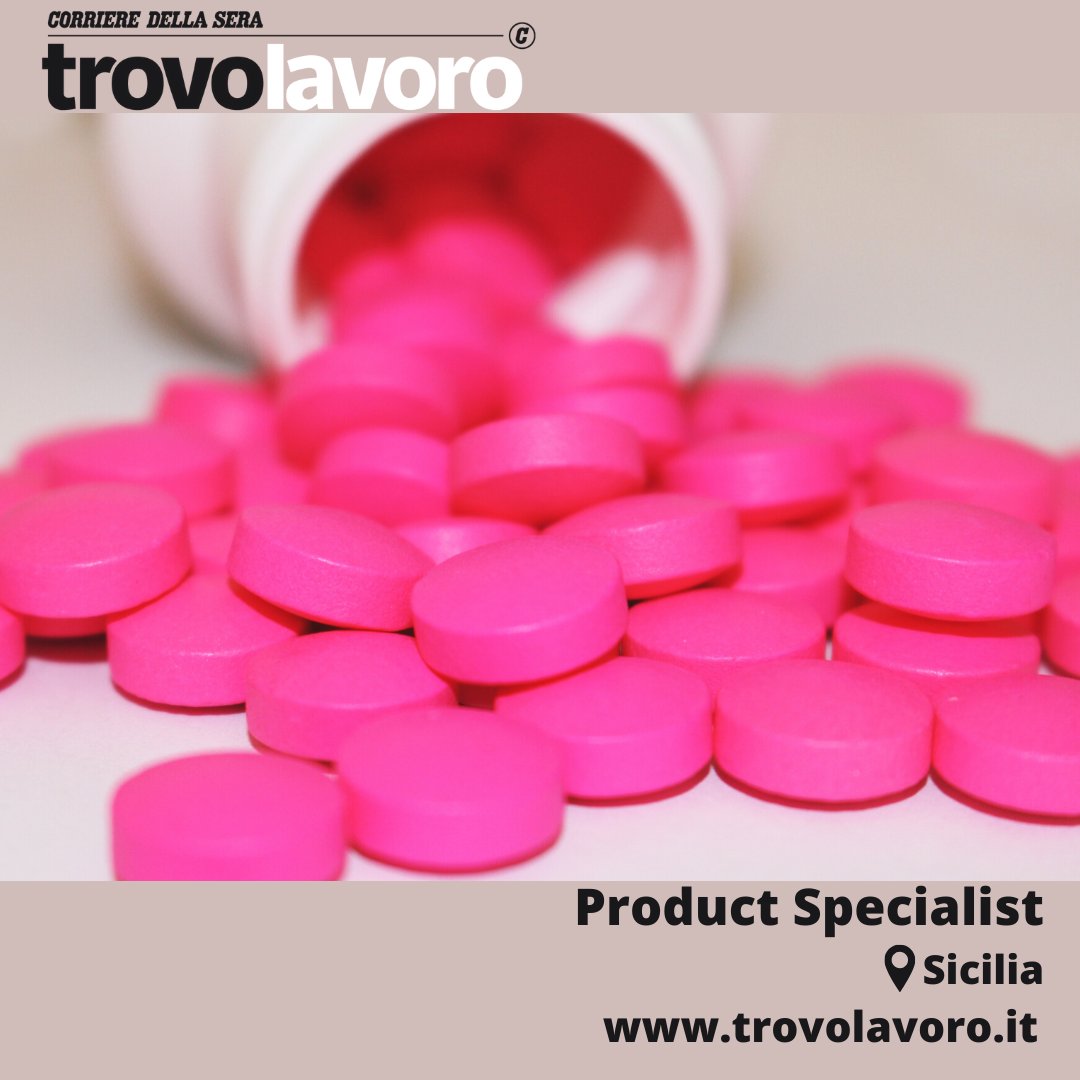
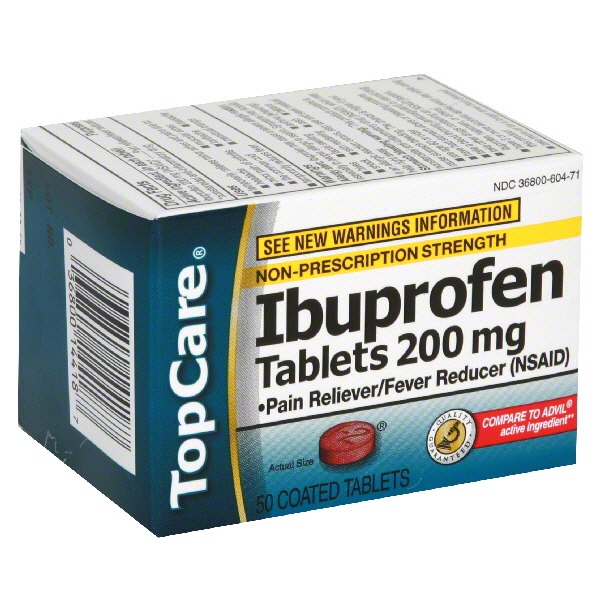 Get your protein from foods like low-fat dairy. products like yogurt, cheese and milk.
Get your protein from foods like low-fat dairy. products like yogurt, cheese and milk.